Laika and the Power of Eyes: A Soul’s Quest for Self-Possession
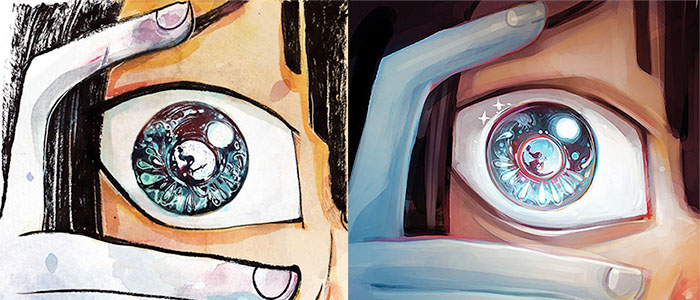
Laika’s film adaptation of Neil Gaiman’s Coraline as well as the original film Kubo and the Two Strings, share a repeated motif of eyes. Eyes are potent symbols, capable of conveying power as well as vulnerability.
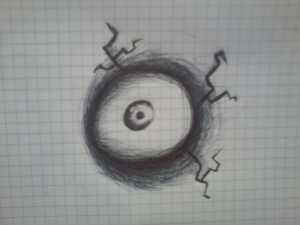
Eyes are perhaps one of the most striking aspects of the human body because they are often said to reveal hidden aspects of one’s true feelings and thoughts. Eyes are repeatedly stolen, or at least under the threat of being stolen, in both Coraline and Kubo and the Two Strings. If “eyes are the windows to the soul,” as the saying goes, then perhaps Laika requires better shutters.
Web-Weavers and Tale-Spinners
It is best to examine how both films approach the overarching, figurative use of sight or vision as well as their literal representation of eyes. As web-weavers, spiders seem to have a storytelling significance for Neil Gaiman, author of the original book Laika’s Coraline is adapted from. In both American Gods and Anansi Boys, Gaiman borrows the folklore character of Anansi. Anansi is a trickster who outwits those who would seemingly outmatch him otherwise. He is a knowledge-collector. The worlds of Coraline and Kubo and the Two Strings are, likewise, intricate webs. Stories are patterns of interconnected strands that are seemingly disconnected when viewed up close.
Only the spider at the center of it all understands the connection between these disparate lines. The characters, affixed to one thread or another, can only see either sticky threads to get tangled up in or deadly gaps of empty space to plummet through. Just like the seemingly flimsy structure of the web itself, the web-creator is much more powerful than appearances suggest.
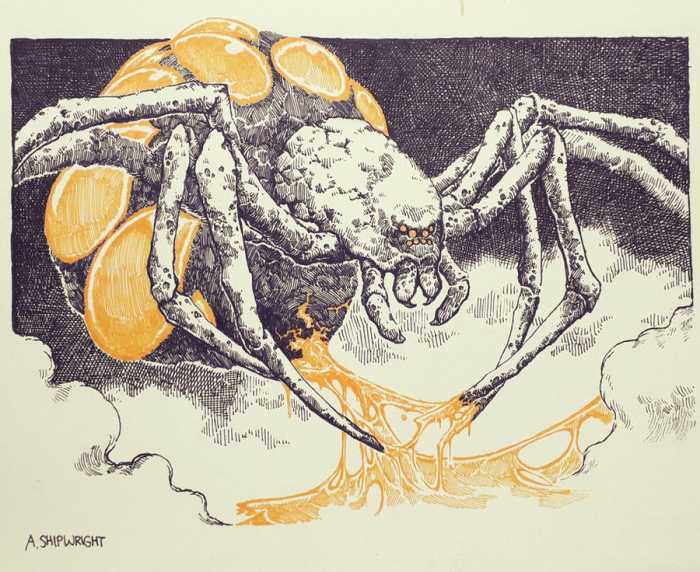
The Other Mother in Coraline is hyper-aware of her storytelling audience. She knows the genre and the cast of characters that would most appeal and warrant a round of applause… or rather, a standing ovation from the nose-bleeds. However, the Other Mother is not altogether as charming and affable a character as Anansi. When she cannot easily win others’ approval or love, she transforms into a dark and intimidating force that will crush and consume whatever it so ardently desires.
From the introductory credits of Coraline, viewers witness the creation of a world. The first frame starts out in space with a doll drifting in through an opened window frame, to be refashioned into Coraline’s likeness. Like a bored god, the Other Mother makes something out of nothing. Matter emerges from the void, as if by magic, to entertain her. As with any child who has a short attention-span, the Other Mother replaces her old dolls whenever she grows bored of them. The more ornate the architecture of the dream-world, the more movement is required of the dreamer’s eyes. 1 If Coraline’s eyes are replaced by buttons, she can no longer navigate the world she dreams up and ultimately escape it by waking up. The eyes in this deeper phase of sleep, rapidly shifting back and forth from one point of focus to another, weave an ornate tapestry on a loom.
Moved by Celestial Strings
The Other Mother cannot successfully function with just a single pair of her own eyes. Despite having multiple eyes, most spiders do not have particularly good eyesight. 2 Just as a spider relies on sensory vibrations its prey makes, the Other Mother relies on feedback from spies that fulfill different sets of needs so as not to leave too many blind spots in her surveillance system. There’s the supportive but benign father, the comfortingly awkward neighborhood friend, the kooky and entertaining neighbors, the nostalgia-laden bedside photo of Coraline’s friends from her previous school, the stuffed animals hidden in the toy chest of her bedroom, etc. As powerful as the maternal figure is, the Other Mother knows her efforts must have the efficacy of a military siege.
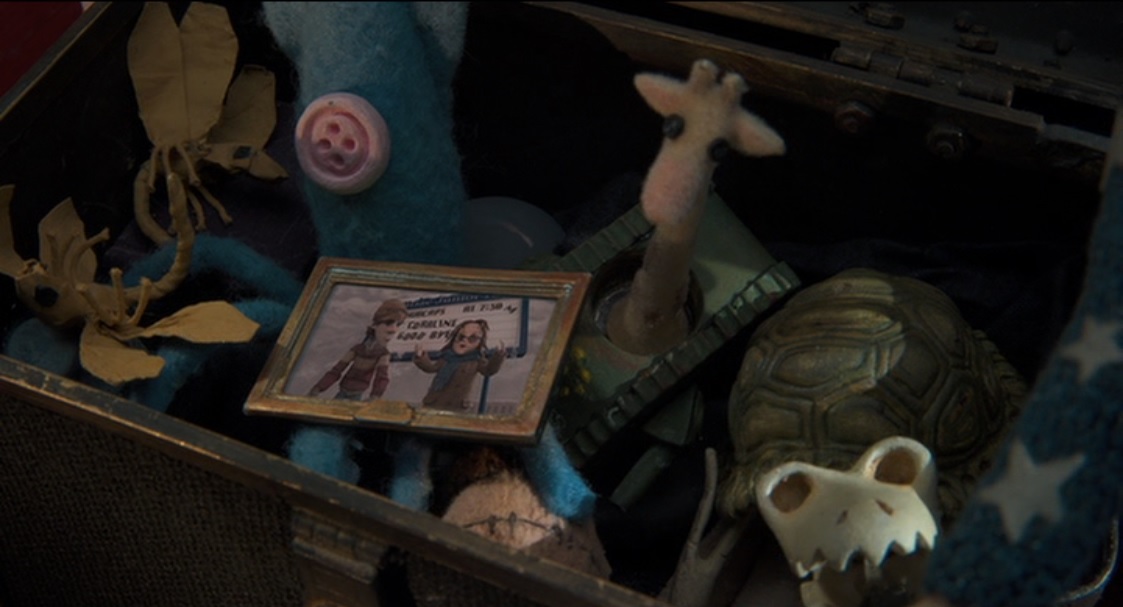
With a single string fitted on his shamisen at the beginning of Kubo and the Two Strings, it seems Kubo’s puppeteer sees fit to move him in only one direction. Such a predicament is otherwise known as fate, a word which would prefer to begin with a capitalized letter to encapsulate its own sense of self-importance. Since he is directed by the planetary influence of the Moon, being a descendant of Raiden the Moon King, Kubo’s destiny seems precarious from the start. Despite being the Earth’s steadfast companion for millennia, the Moon is known for its changeability and its gravitational force being responsible for the ebb and flow of the tides.
Both Coraline and Kubo’s worlds suggest a pantheon of forces that threaten to pull the protagonist apart because of their scattered and disorienting approach. It is not unlike an ancient execution style, often reserved for those who commit regicide, of being dismembered. 3 Instead of a singular divinity, a legion’s worth of god-like storytellers would plague Coraline and Kubo with their contradictory approaches and goals. A pantheon of gods, such as those in the Greco-Roman tradition, are not only profoundly powerful, but flesh-and blood in regards to displaying self-motivated aggression and desire. Individualistic compulsions enmeshed in immortal forms spell trouble for humans that make the mistake of crossing their path, as whether this encounter will be a stroke of luck or a grave misfortune is anyone’s guess. Human beings are the collateral damage of petty squabbles and family dysfunction among the immortals. In such a world, heavenly beings are not to be entirely trusted. They may play favorites, but their attentions and affections are not only fickle but potentially dangerous as well. They have a tendency to break or simply misplace their toys.
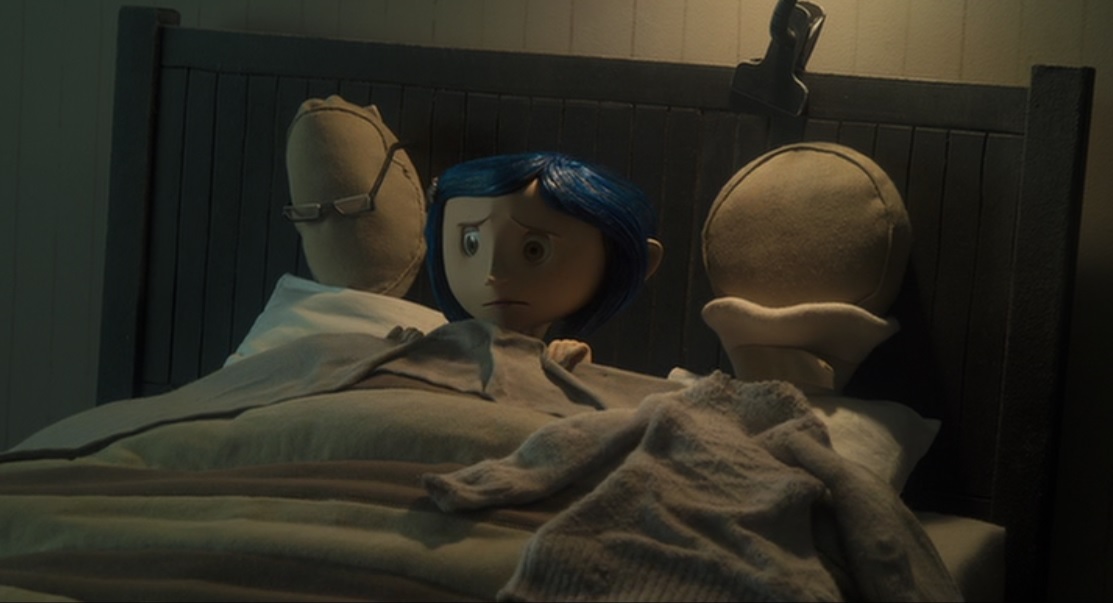
The fragile human being stuck at the early aughts of existence has much to lord over him or her, producing quite a different relationship to favorite childhood toys. One is forced to alternate between the comfort of another human being, who serves as a caretaker, and a self-soothing toy or blanket one clings to in the caretaker’s absence. All manner of childhood comforts are mother-surrogates, able to step in to console the child when the mother is either unwilling or unable to do so. Coraline constructs make-shift parents from the bed pillows and blankets when her flesh-and-blood parents go missing. Kubo safeguards his monkey totem given to him by his mother and the animated “Little Hanzo,” imbued by the magic of his shamisen, becomes a constant companion on his travels as well.
In Coraline, buttons entail one’s eyes being pierced and gouged out of their sockets. This turns any and all button-eyed playthings of childhood into objects out of nightmares rather than the comforting companions that once helped put kids to sleep. Sleeping soundly means the monsters lying under the bed or hiding in the bedroom closet may seize an opportunity. In Kubo and the Two Strings, there is no lunar orb of Goodnight Moon! or “And the Cow Jumped Over the Moon” fame. With a sinister moon hung up in the sky, the protagonist can be assured of many sleepless nights, paranoia, and nightmares.
Trompe-l’œil: The Walls Have Eyes And Ears and Hands… All The Better to Seize You With
Such a wariness of common household images creates a rampant distrust of one’s surroundings, which may appear to have the means to annihilate the protagonist’s existence. Perhaps one major source of the hero’s isolation is the feeling of separation between himself and the landscape he traverses. Coraline and Kubo and the Two Strings play with this idea by containing elements of the magical, of playing with the boundaries between the self and not-self.
Such an environment is an active enemy, a fractured ground that threatens to seize one’s seemingly-sturdy feet when one least expects it. The word “seize” is useful here because of its multiple implications for the protagonist. The protagonist may be “seized” when he is taken possession of, receives sudden clarity, or is rendered immobile by a feeling or pain. No matter what the case may be, or if the answer is indeed “all of the above,” the word “seize” contains both a gripping stillness and rapid movement within its etymological scope. All of these concepts are also contained within the realm of sleep. When one is sleeping, though one appears dead to the world, the movement behind closed eyes and its corresponding brain activity suggest all sorts of aliveness.
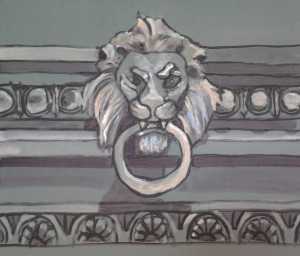
The French term, “trompe-l’œil,” is an artistic technique that creates an optical illusion for viewers. It renders a two-dimensional object into a life-like image that appears to interact with the outside world. 4 Intense dreams function much the same way, convincing the dreamer of their immediacy and tangibility. However, this effect would be nullified were the dreamer or viewer made to interact with the dreamscape or object in question, using one’s body instead of one’s mind.
A version of “trompe-l’œil” appears in the literary world as well, in the form of apparitions meant to convey important messages or warnings to the protagonist. As with the ghost of Marley’s face superimposed over a lion-headed door knocker in Charles Dickens’s A Christmas Carol, these ghostly afterimages momentarily reveal another dimension of reality normally hidden from view. It is a sign of an imbalance in the world that the protagonist must rectify. To anyone who witnesses such a distortion of reality, one’s sanity is likely to be called into question. To witness an object momentarily animated is much like a blurred image, a photo taken when the subject was caught unawares and still in motion. The viewer might struggle to make out the details that would make analysis seemingly easy, which means the blurred image must be studied more carefully than a perfectly static and high-resolution photograph.
Ground(ed) Floor, Please!
Coraline warns of the dangers of being bewitched or seduced by illusions, mistaking shadows and fun-house mirror reflections for reality. Perhaps the best place for these features to hide is within the guise of a house, its haunted quality obscured by the familiarity of traditionally comforting furnishings. A house, a place reserved for solace and relaxation, often tries to serve as an extension of the owner or resident’s identity. When it is haunted, the physical structure takes on a psychological quality akin to being alone and trapped within one’s spiraling thoughts.
Just as multiple recollections of a memory alter the memory’s contents ever so slightly each time, so does the understanding of the Other Mother’s powers vary depending on which level of the Pink Palace apartments you stay in in Coraline. Both Miss Spink and Miss Forcible downstairs and Mr. Bobinsky upstairs unknowingly provide Coraline with warning signs about the Other Mother’s presence within the house. However, the skill and clarity with which they do so differs because of the physical elevation of their living spaces within the Pink Palace.
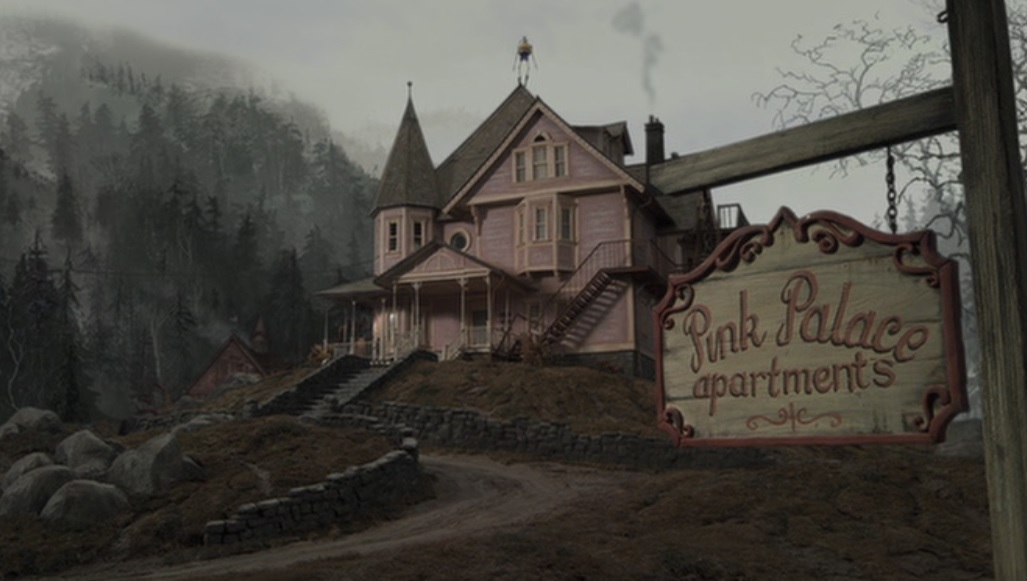
Miss Spink and Miss Forcible are retired, their golden years of life on the stage long behind them. Their long-dead Scottish terriers are encased in costume and lined up on the walls as testament to their storied theatrical careers. Even dogs who have not yet departed the land of the living are prepared for the eventual arrival of death. It is a predictive sign of Coraline’s fate if she is not more careful. Since these two women are hidden away on the lowest, basement-level floor of the house, their attempts to help Coraline are muddled and confused despite their good intentions. Do their fortune-telling tea leaves mean Coraline is in grave danger or that she’ll meet a tall, handsome stranger in the future? Does the stone made out of candy find “bad” things or “lost” things? The debate appears to be ongoing.
Since Mr. Bobinsky is relegated to the upstairs space, his vantage point is a little different. Though Mr. Bobinsky is out of shape and a bit sloppy, his mouse circus is still technically up and running (even if it’s just in the theoretical sense). This is why, when Mr. Bobinsky relays the circus mice’s message to Coraline, the signal is both stronger and clearer. Though Mr. Bobinsky himself cannot make sense of their message, his mice explicitly warn Coraline not to go through the little door. Their counterparts, the circus mice of the Other World, appear as a foursome. They seem intent on constructing a new place with four sides to it, but whether this will be a house or a confining box is up to Coraline to find out.
Waiting in the Wings and Signs of Combustion
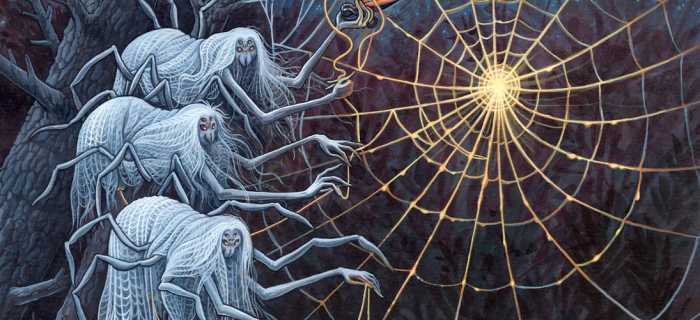
A three-tiered or triple-pointed perspective, as demonstrated in the physical division of the Pink Palace apartments, is a common pattern. According to the Fates or “Moirai” in Greek mythology, which appear as three witches or goddesses, the destiny of each and every human being is fashioned on a loom. Among the Moirai, there is one who spins the thread, one who measures its length, and one who cuts it to size. 5 Since there are three of these “Moirai” witches or goddesses at the loom, it suggests an inherent imbalance is present.
There is no back-and-forth rhythm of reconciliation and peaceable partnership to be found, which would mimic the predictable eye movement of dreamers. There are triangles instead, which are representative of combustion. It is a mixture of ingredients that increase the likelihood of fire. Fire exists as both an instrument of destruction as well as rejuvenation. This creative dynamic of three is represented in the interplay between a story, its storyteller, and its audience. The vision created and projected is somehow in the spaces between these focal points.
Both Kubo and Coraline represent a party of three with their respective parents. In Kubo and the Two Strings, Kubo has endured a great deal of violence since he was a baby. There is no pretense made in the film that Kubo’s innocence will protect him from the bad intentions of his relatives. If not even a mother is capable of protecting her child from harm, the child grows up knowing nothing is sacred. Inattentive and distracted parents in Coraline leave a dangerous gap open for an intrusive force to sneak in and do harm. A parasitic Cuckoo will infiltrate the bird’s nest.
When this magic three is reduced to two, it usually spells trouble. The protagonist is reduced to an either/or scenario with no counterbalance. A “third party” is considered objective, able to to view a two-sided exchange from an impersonal distance. Since human eyes are intended to come in a pair, they are by nature duplicitous. The mind interjects and forms a perception out of the separate images captured by each individual eye in an attempt to create a stable, three-dimensional view of the world. It should be no surprise that the figurative existence of a “third eye” located on the forehead is meant to convey wisdom beyond ordinary observation.
Coraline’s alarm system in the Other World comes in the form of three ghost children and her saving grace, gifted to her from Miss Spink and Miss Forcible, is a triangular stone with its center carved out. This combines the outer form of a protective triangle with the duplicitous tactics the Other Mother uses. To use it resembles peering through a keyhole or a peephole, an action with which its possessor may examine what is behind a locked door without either making oneself susceptible to outside dangers or revealing the act of one’s own surveillance. This is an important difference from the use of a key, which is what gets Coraline into trouble in the first place. To merely make observations through a keyhole, as opposed to an attempted break-in, mimics the Other Mother’s discreet and anonymous data-collecting skills.
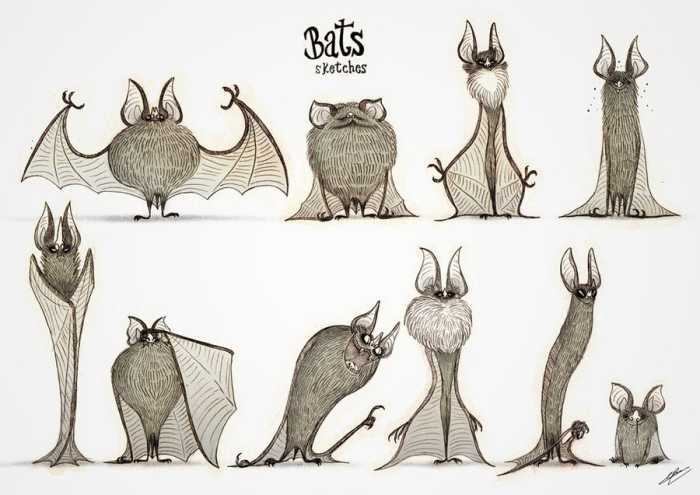
Aside from various button-eyed dolls, the Other Mother’s spies in Coraline are all depicted as rats in disguise. The term “rat” does not mean merely a rodent, but is used as a description of someone who is an informer. Secrets are never sacred with them. Miss Spink and Miss Forcible’s many Scottish terriers are depicted as dogs with a bat-like appearance in the Other World. Aside from the potentially devilish connotations (as opposed to the taxidermy Angel outfits in the real world), it also conjures up the inaccurate but nevertheless popular phrase that bats are simply “rats with wings.”
Dogs are often viewed as truth-finders. They can be trained to hunt down an escaped criminal, sniff out potentially cancerous cells in their human caretakers, or root out drugs in a school locker. With their noses to the ground and being leash-bound and attentive to their owners, dogs are considered steadfastly loyal and hard-working. Giving these dogs wings presents a challenge to this assumption. It makes them slippery and unable to be pinned down, which is what their taxidermied fate would have them be. The phrase “a little birdy told me” means winged creatures are gossip-bringers, traveling town-criers who might unintentionally distort the truth because of their inherent flightiness and the speed with which they deliver any hint of news.
Most canines are also pack-oriented animals, relying on an intricate team-based structure to delegate various duties among participants. A cohesive pack has the power to accomplish what a lone dog could only dream of. Their aim is much like the drawn-and-quartered, multi-pronged approach mentioned earlier, disorienting their victims by attacking and tearing at flesh from multiple angles and closing in upon the target until exhaustion finally takes over. The final blow is to shake and repeatedly thrash the victim about until death. As the Other Mother’s henchmen, this tactic comes in handy. Overwhelming Coraline with mind-numbing fantasy is exactly what the Other Mother’s plans call for.
Kubo’s aunts in Kubo and the Two Strings, Karasu and Washi, are essentially the Moon King’s pair of demonic wings who act as his messengers of destruction. Since they are masked like identical twins, their eerie similarity allows them to fly with ease in much the same way as each wing needs to be similarly designed to allow any creature as a whole to take flight. This “twin-like” approach allows them to attack with a pincer movement, surrounding the enemy by attacking from either side and leaving little room for error and escape. The sound of their voices reverberate through the air like a haunting echo in a cave, disorienting their targets by making their location unclear. They are bat-like as well, coming alive at nighttime while cloaked and using the echos of Kubo’s existence to effectively track him.
The identical twins quality of Kubo’s aunts is contrary to Kubo’s companions, his figurative wings, Monkey and Beetle. Monkey and Beetle are opposing but complementary forces needed for Kubo to mature as an individual. The discussion Monkey and Beetle have on the beach about Kubo’s welfare allows Kubo to experience what it is like to be a part of a family unit. Without knowing Monkey and Beetle are reincarnations of his actual parents, Kubo experiences it as a role-playing of a typical parental discussion. Whereas the fearsome twosome of Kubo’s aunts seeks to annihilate him, Kubo’s existence is preserved as an important focal point within his parent’s back-and-forth dynamic.
A family structure does not just consist of attempts at congeniality and pleasantries. There is also a jostling for power, a recognition and desire to navigate life as if the three individuals involved were a single entity. A participant in a three-legged race will surely fall and lag behind if the idea of cooperation is not considered. Of course, this assimilation of identities cannot always proceed smoothly. Evidence of this is hidden within the hints of the romantic chemistry between Monkey and Beetle at this precise moment. Their previous relationship, a clandestine and star-crossed love affair between a daughter of the Moon King and a mortal warrior, is seemingly conjured out of thin-air by precarious thoughts concerning their offspring’s welfare. This exchange occurs subconsciously, under the guise of role-playing to the audience and to themselves.
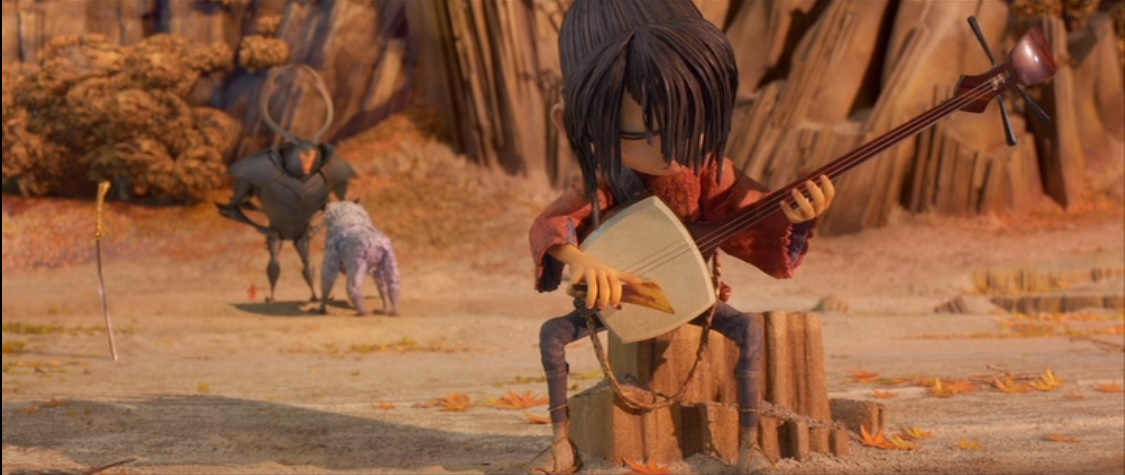
Whereas Kubo’s father places emphasis on novelty and adventure, his mother is more concerned with safety and security. This is a call-back to Kubo’s parents’ previous positions. Kubo’s mother once had a permanent place among the heavens, whereas Kubo’s father was a wandering warrior on a quest to make a name for himself. Kubo must incorporate both of these qualities, a belief in the sanctity of “home” and the risk-taking courage required to both defend it and expand on its definition, if he is to defeat the Moon King.
When Sariatu and Hanzo first meet as human beings in Kubo and the Two Strings, their courtship involves blending physical combat with verbal flirtations. As Sariatu mentions, Hanzo is a master swordsman as well as bowman, which means he is skilled at both close and long-range combat. He is not easily thrown off by a change in tactical maneuvers. Like an expert dancer, he is prepared to lead and follow depending on how his partner responds to his advances (military or otherwise). To avoid the blurred effects of either shortsightedness or farsightedness, the lens must be willing and able to adjust its perspective and pivot its direction.
Liminality and Shape-Shifters
If there can be no “magic three” entity of allies, Coraline and Kubo must perform some sort of mitosis or ventriloquism. This way they can divvy themselves up to be in two or more places at once. They must blur their own identities to not only be more difficult to track, but to cross thresholds previously inaccessible.
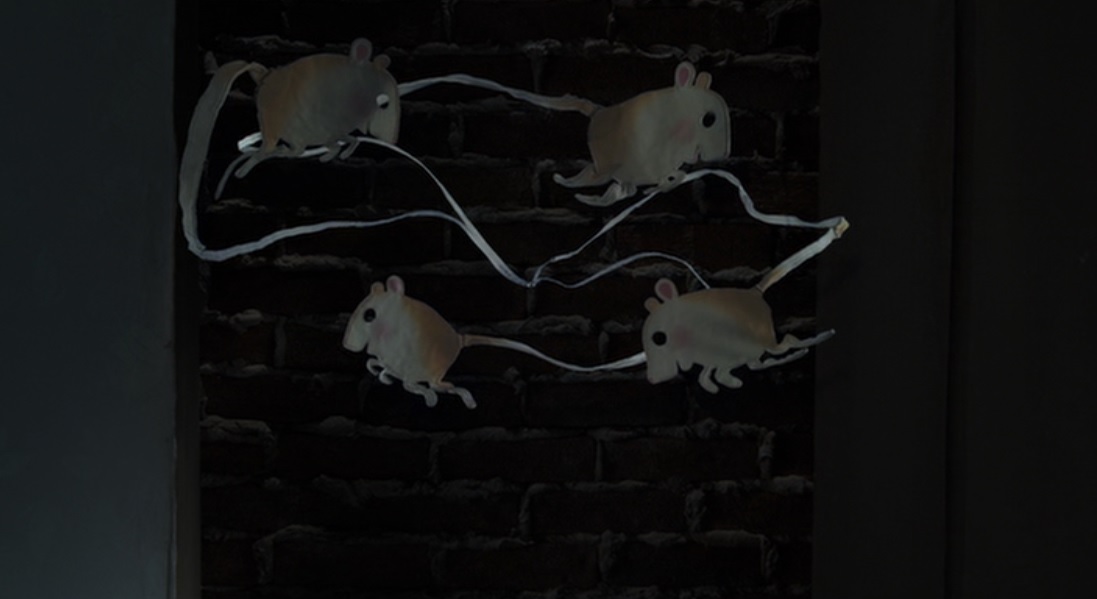
It is fitting then that Mr. Bobinsky’s mice are messengers for both the real world and the Other World. Mice are not typically reacted to with as much disgust as rats are at first glance. They are often seen as meek and harmless (i.e. “Are you a man or a mouse?”), though few would readily welcome them into their homes without a proper invitation. Their littleness also means they can be highly underestimated. The Other Mother’s version of the circus mice are the first creations to seep through the brick wall in Coraline’s living quarters, with the thinness of paper dolls bound only by string. Since Mr. Bobinsky’s residence has an elevated standing within the household, it is only fitting that his mice become instrumental messengers for both good and ill.
Much like Hermes, the messenger god who can cross boundaries no other immortal dare tread, the black cat in Coraline can move seamlessly between the original world and copy-cat Other World. Hermes is also a trickster figure, playing whichever side suits him best in the moment. As the black cat advises Coraline, perhaps based on a similarity of interests, the Other Mother is fond of games. Much like a cat playing with a ball of yarn, the Other Mother likes to play with words just as much as she enjoys toying with people’s lives. The more tangled and convoluted the conversation gets, the better.
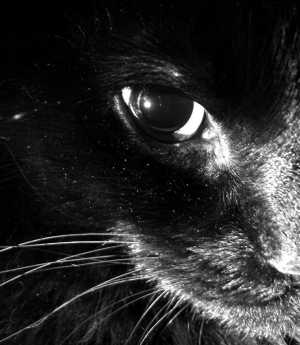
Unlike Miss Spink and Miss Forcible’s dogs, resigning themselves to be sewn-up in their funeral garb while still in the land of the living, the black cat offers no such evident self-sacrifice. He keeps quiet in the real world but speaks his mind in the Other World. He is a sympathetic look-out who is there to offer life-saving advice, but he does not willingly step out into the fray. Coraline must forcibly hurl him at the Other Mother out of desperation. At least from a Western perspective, black cats are often considered bad luck. They are sometimes either considered to be witches in disguise (i.e. Professor McGonagall from the Harry Potter series) or demons and spies. 7 Cats are also generally nocturnal animals with strong eyesight. This night-vision takes on a metaphorical quality because the black cat can perceive the darkness in the Other Mother that the children preyed upon cannot. Hermes is also known as the “Guide of Souls,” a role the black cat serves for both Coraline and the lost ghost children. In Coraline’s case, having a black cat cross her path is perhaps her greatest lucky charm.
As evidenced by his lack of button eyes and his own declarations, the black cat is not one of the Other Mother’s creations. The cat is wholly himself at all turns and thus contains no opposite for the Other Mother to manipulate to her advantage. Unlike dogs and humans, cats simply do not have the same facial muscles with which to make the variety of expressions an owner might hope for. 8 This makes his emotional concealment similar to the Other Mother’s. It is tantamount that he is shown as a stray, with no collar around his neck and without a name to call his own. Being the unpredictable ally he is, he rescues the ill-gotten final ghost eye when all hope seems lost and crucially (but accidentally) rips out the Other Mother’s button eyes later on.
As predators, the majority of felines are solitary hunters with a focused approach to targeting their prey. They cannot rely on the same disorienting methods a pack of swarming dogs, approaching from many different angles, can rely on. At the earliest opportunity, they seek to smother and suffocate prey before it has a chance to escape. They permit no instances of branching out or pulling apart in diverging directions, except perhaps once the game is clearly already won. Instead, the cat acts as if snuffing out a candle by pinching the luminous wick at its stem. Both paws converge like two lines at a vanishing point on the horizon, attempting to reduce the smoke signals that might alert any passers-by. They also prefer to suffocate by targeting the jugular, figuratively cutting off the storyteller’s source of wordplay. This method, contradictory to the Other Mother’s far-reaching and scattered tactical maneuvers, is why the black cat proves to be such a dangerous adversary.
Unlike in Coraline, wandering and fracturing is not just a symbol of duplicity but deliverance in Kubo and the Two Strings. Though Kubo’s story is one of repeated loss, he does not in actuality spend much time separated from his parents in the film. According to Kubo and the Two Strings, one must sometimes (willingly or not) take on new physical forms, that others may not immediately recognize, as an impetus for spiritual growth.
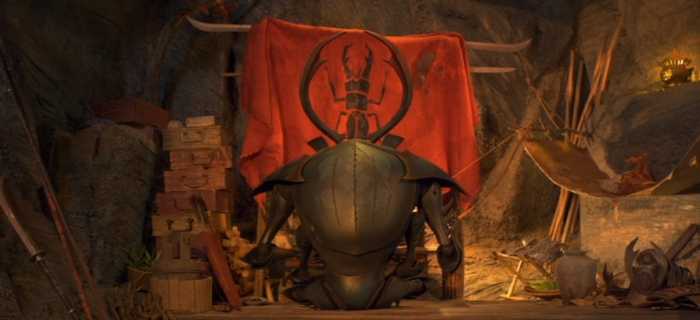
Hanzo’s newfound appearance is not just any beetle, but likely inspired by a stag beetle. Because of their bulky and lumbering appearance, stag beetles are not animals one would think have the capability of flight. However clumsy this flight is due to their weight and despite their intimidating appearance, their impressive armor is mainly a form of display and posturing. They are also nocturnal animals, which means Hanzo can offer protection when Kubo is at his most vulnerable. 9 This is not something Kubo’s mother, in her human form, could offer him. Due to her exile from the Moon Kingdom, she had to adjust her inclinations and become day-clinging. This is an unnatural state for a daughter of the Moon King to live in.
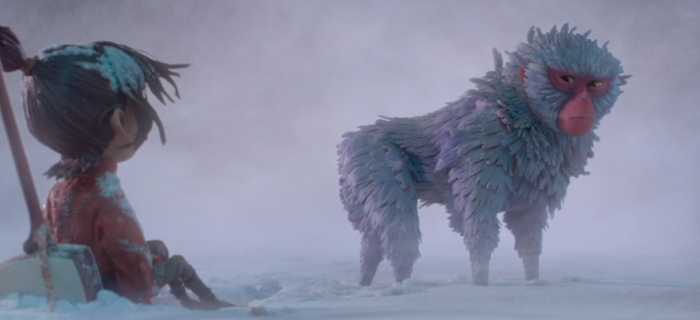
However, Sariatu’s newfound form as Monkey offers her a quality she lacked beforehand. Japanese macaques, the specific species she embodies, can survive in the coldest climates of any of today’s living primates. Making use of their thick coats of hair as well as bathing in hot springs, they are a tenacious and hardy species. 10 This is quite a contrast to the image of the world-weary, frail, and incoherent human Kubo’s mother is shown to have become as the result of her heavenly exile.
Despite their outward transformation, both parents retain their integral design. Hanzo the warrior is a member of the Beetle Clan and Sariatu’s gift of a stone monkey totem to Kubo acts as a protective surrogate for herself. In a sense, they do not change much at their core at all. Though viewers are never introduced to Hanzo in his human-form, the voice actor is the same for Kubo’s mother whether she is Sariatu or Monkey. The only clear difference is a change in tone, Monkey defiantly showing a resoluteness in protecting Kubo that she could not as easily sustain as Sariatu. The father is a flexible and adaptable adventurer at heart and the mother is representative of the stability and courage to outlast whatever obstacles are thrown in her way.
A Penny for Your Thoughts in A Wishing Well
In order to interrupt this disappearing act and catch a soul in flight, what methods does evil have to ensnare Coraline and Kubo in a net? The secret is not to ground the protagonist at first sight, but to wait until the intended victim may be caught in mid-flight. To be shot down, so soon after the feeling of freedom, is a recipe for despair. When a victim is surest in their sense of freedom or, at least in its possibility, he or she risks the most in terms of personal safety.
Any hero’s journey begins with the protagonist’s appetite for danger, venturing outside the confines of what is acceptable. This curiosity brings them to the edge of an abyss. Heroes have to personally subject themselves to danger in order to understand its true power and threat to them. To merely learn of danger second-hand, through neighborhood gossip or the stern finger-wagging of a parental figure, is simply not enough. Perhaps knowing this, dreams are where Kubo’s grandfather, The Moon King, lays his traps. Dreams are private and potent and to lay traps there conveys an individual’s propensity for self-sabotage.
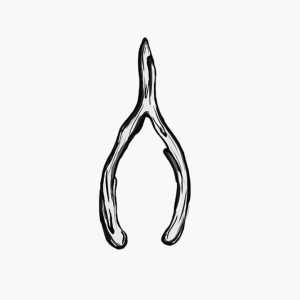
The first hint of danger in Coraline is when Coraline is shown navigating the land with a dowsing rod to find an abandoned well. Wybie immediately calls her a “water witch” upon seeing her with the apparatus. Dowsing rods are meant to locate hidden features in the land such as areas of ground water, determining whether the land will be profitable. However, in occult practices, it can also be used to locate buried treasure as well as dead bodies. It serves as a precursor to the triangular stone gifted to Coraline by Miss Spink and Miss Forcible. 11 It is also perhaps no coincidence that Coraline’s dowsing rod resembles a wish bone. Since it remains intact, it suggests all the overflowing promise within the Other Mother’s world can never truly be accessed. Unlike the custom of wishing good fortune by breaking the wish bone, the magic hidden within this one is always contained.
Yet the fashion of breaking a wish bone is still present in other ways. The Other Mother’s understanding of love is a matter of breaking someone’s will by applying soul-crushing force. She applies so much suffocating pressure, that eventually her victims break down and submit. The “wish bone” is also known as a furcula in birds. It is the part of the anatomy that allows birds to withstand the rigors of being airborne. 12 To break this bone, in the figurative sense, is to render Coraline flightless. It cuts her off from a reserve of energy, a springboard that would allow her to be her own person and unattached to the Other Mother’s bidding. It goes well beyond simply pinioning a bird, a practice common in regard to poultry, to prevent flight.
“They say even the proudest spirits can be broken – with love.” – the Other Mother
From Coraline.
Kubo and the Two Strings highlights the hero’s fatal flaw, the nagging thought that both brings about his downfall and is the impetus for his character growth. The hero or heroine is hung up on the eternal question: “Who am I?” Kubo’s mother does not actively bar him knowledge of his lineage but, as with any familial history, the so-called “truth” is heavily buried beneath misleading debris. There are false leads, heavy exaggerations, and promising finds that somehow trail off like the gnawing, empty space after an ellipsis. When individuals comes across blind spots in their vision, the mind fills in the gap of missing information with whatever is most convenient and easily camouflaged.
A Gutting Starvation
The Other Mother and the Moon King are only too eager, with bait on their fishing lines, to supply tantalizing gingerbread crumbs of answers to eternal, existential questions. The potential victim essentially turns into Pavlov’s dog, salivating at the mere mention of a treat in the form of a sound… a distant, but promising vibration. Prior to the heady lift, the villain must decide how best to fatten the pig for slaughter. In order to be inspired to flee their earthbound predicament, victims must exhibit a primal dissatisfaction that none other than the predator can satiate.
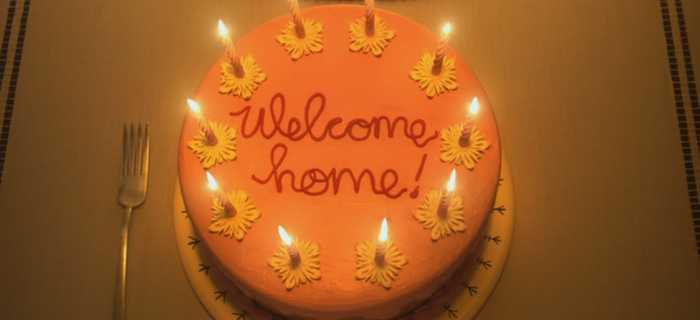
This presents the hidden paradox of possession. The acquisition is not often as enticing and exhilarating as the chase. By possessing these children’s souls, the Other Mother mistakenly believes she’s filling a void in herself (even if it’s just an empty stomach). But, inevitably, once she finishes a meal the hunger restarts its nagging tremors. This starvation complex is something the Other Mother applies equally to her intended victims. If the current residents of the Pink Palace had no children at all, perhaps the Other Mother would be forced to venture elsewhere in search of a fresh meal. The narrative operates under the assumption that the residence will always be intact with tenants for the Other Mother to prey on. There’s always a congregation of lonely hearts somewhere nearby.
Coraline: “Why does she want me?”
Cat: “She wants something to love, I think. Something that isn’t her. Or, maybe she’d just love something to eat.”
Starvation or emptiness allows for the multiplicity that confuses and disorients the protagonist. Trauma spreads out in all directions like one gigantic web with the creator at the center. Unlike a spider, the creator remains stuck in trauma’s web. He or she cannot glide across from point to point, but easily gets fixated and tethered to a spot which sinks with the heaviness of gravity pulling it down. Destructively repetitious thought patterns render their makers both immobile and unaware of it.
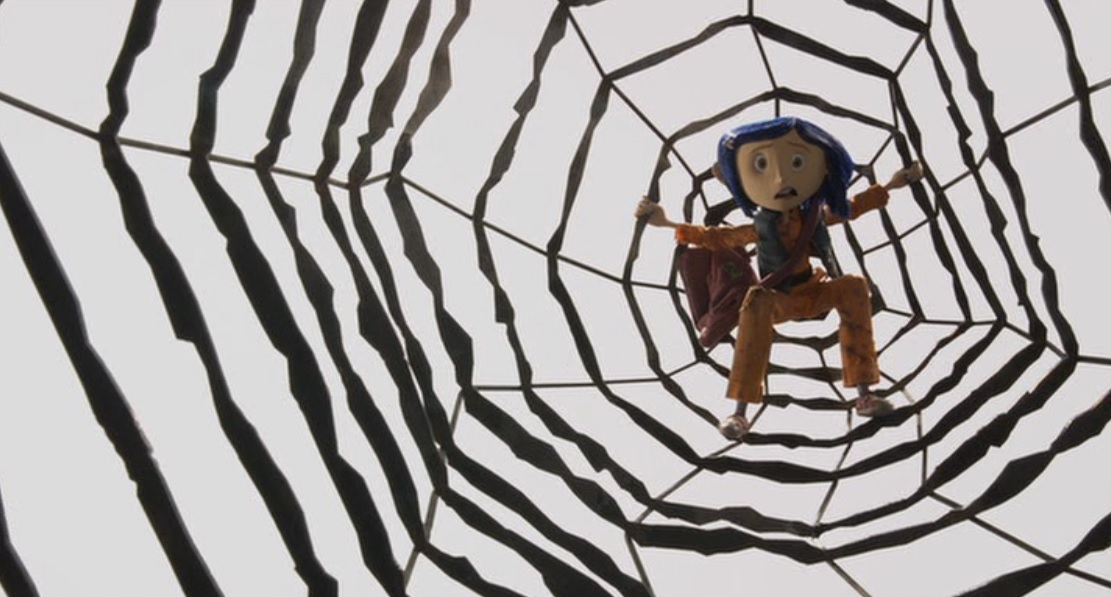
Coraline’s real mother is the typically drained, overworked parent who doesn’t give her daughter the amount of attention a growing child not only craves but needs. This lessened amount of parental attention could be better endured were it not coupled with the family’s recent move, leaving Coraline adrift without other children her age to turn to. Coraline’s “Other Mother” is the exact opposite of what Coraline has become accustomed to. She is exciting precisely because of the prospects that newfound sense of importance presents her with.
Other Mother: “You know I love you.”
Coraline: “You have an awfully funny way of showing it.”
Like a common parasite, the Other Mother never wanders too far from her nesting site. She does not want to expend excess energy chasing after food, if she can help it. The Other Mother behaves on the basis of short-term memory, of only thinking as far ahead as her next meal will take her. Beyond the limits of her world is simply white space which eventually sends wandering travelers back into the setting they had originally departed. Coraline is literally forced into walking around in circles, as if she were unknowingly weaving the threads of sticky web around herself to get stuck in.
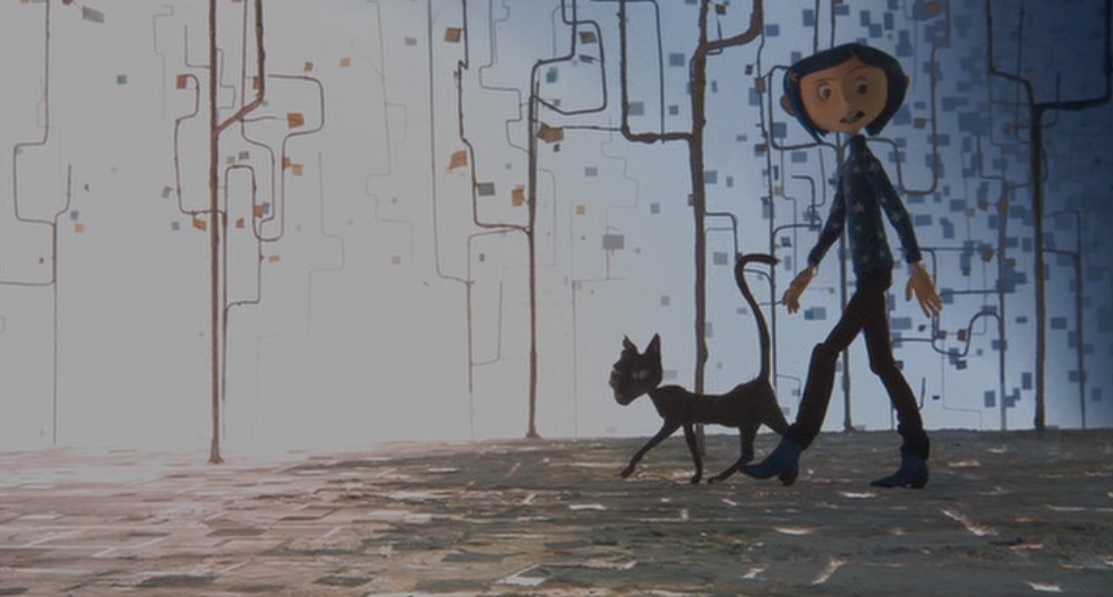
Though it is an obvious sign of the Other Mother’s frugality of resources when it comes to world-building, it is also a sign of the Other Mother’s limited imagination. She does not have panoramic vision, but a cropping tool for editing her photographs. Though she obviously feigns a plentiful feast is in store for a child yearning for maternal affection, the Other Mother clearly has little to offer her guests.
A Flooded Causeway
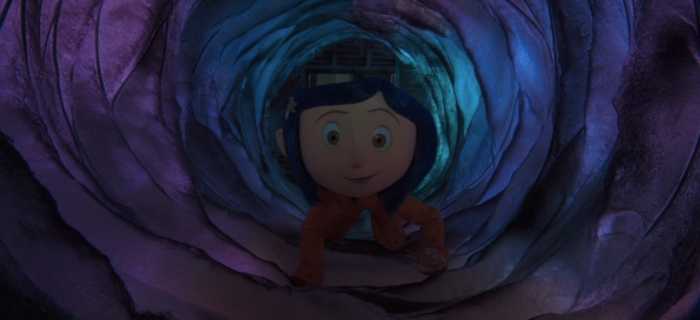
This limited imagination is an important strategy for encasing victims. How does the Other Mother prevent her victims from turning back once they realize the deception? Can’t the driver simply make a U-turn once he or she realizes the road has a downed wire or a conspicuous sinkhole lurking ahead. The answer, of course, is to flood the road behind them. Make the path once traveled untraceable. The colorful tunnel between Coraline’s world and the Other World, resembling an intestinal tract that expands and constricts to push food along, must eventually lead to a point of no return. When Coraline exhibits a hint of hesitation in her trust, the Other Mother quickly withdraws any and all signs of affection. Coraline is quickly thrown into a closet, a “time out corner” for her to think about what she’s done to offend.
She winds up in her very own Island of Misfit Toys, lost amongst all the other wind-up toys like an old gym sock. It is also essentially a mass grave. There are no individualized burial sites or dedicated shrines to be found. It is a siege of emptiness, desolation closing in on Coraline from all angles. Does the Other Mother assume the ghost children’s presence locked in there with Coraline would shatter any lingering bravery? It is more than likely the Other Mother completely forgets the ghost children’s existence altogether.
When Coraline fights off the the Other Mother in her true form, the Other Mother’s world starts to cave in on itself. It crumbles in much the same way as a spider retracts its limbs upon itself in death. This rupture activates a heavy trap door, spurring gates to close all around the victim. When a causeway floods, one becomes trapped on an island and cut off from the rest of civilization. When applied to the narrative experience, a story’s characters are only as alive as their storylines are. The storyteller can cut off the life source if and when he or she likes. The frigid landscape Kubo finds himself in after being brutally ripped away from his mother is analogous to being stranded, of having to start again from square one. By cutting a child off from his mother-as-life-source, it is assumed by his vindictive extended family that Kubo’s story is finished.
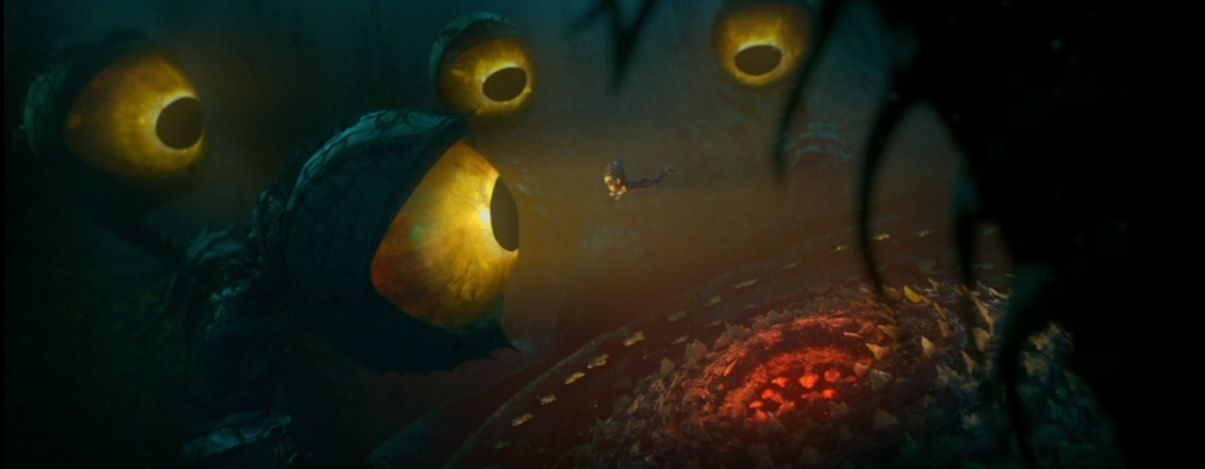
As a defensive strategy, the depths of the Long Lake in Kubo and the Two Strings also appear comforting and benign. Whenever a potential victim falls into its waters, the Garden of Eyes promises to cut out all fears and anxieties about the future. It could alternatively be known as the “Lake of Longing.” Kubo gets submerged in images of the past. This process provides clues about his true identity. However, Kubo only regains his agency because someone else interrupts the submersion process before completion. Someone from the outside has to intervene on Kubo’s behalf to rescue his physical body once his mind has been overtaken. Such a psychological takeover has the ability to nullify Kubo’s ability to take action, putting him at risk of drowning.
Though the flooded causeway is marked by its confining qualities, it is also defined by the ease with which one can accidentally fall into its grasp. That is why the well in Coraline is sealed off, encased in mud, and encircled by wild mushrooms. Signs of architectural neglect and decay may suggest low foot-traffic, but also a breakdown of organic matter (man-made or not). Such a permeable barrier can easily be infiltrated by outside forces. That is why the Other Mother’s lair is initially trapped behind a thin layer of wallpaper and though the key to it is forgotten and jumbled together with other knick-knacks, it is easily recovered if one simply opens one of the kitchen drawers. It is no wonder, with so much room for error, Wybie’s grandmother is wary of renting any room in the Pink Palace to families with children.
If one were to get figurative about the term “flooded causeway,” it points at an inability to form connections. How can the eyes make sense of what they see if there exists no frame of reference with which to draw comparison? What can one do with a single image and no understanding of how it was constructed? Events no longer bleed into one another and the subject is no longer able to see how Event A might be linked to Event B and so on. The synapses do not connect. Important details get muddled together with insignificant, short-circuiting imaginative leaps. This inevitably leaves the protagonist stranded on various, isolated islands with no idea of the existence of rafts.
On the Isle of Amnesia
The link between an individual and his or her ancestry is vital for survival, represented by the nuclear family in both Coraline and Kubo and the Two Strings. When adults are presented as clueless spectators to the dangers that surround them, children become obvious targets. There is a persistent confusion around parental figures in both films. Family members are supposed to be both effectively present and nurturing, but Coraline and Kubo and the Two Strings turns this assumption on its head. Parents go missing or are stolen away and other family members or neighbors and friends are not merely distanced blood-relations one only catches a glimpse of in old family photos or holiday greeting cards. Instead, they may well be swarming and malicious blood-suckers intent on devouring the little ones.
For much of Coraline, the film’s namesake remains unaware of the other children who have lost both their lives and their eternal souls to the Other Mother. Being cut off from these previous links is meant to make Coraline feel singular and special. With Kubo and the Two Strings, the feeling of singularity is related to a type of repetitious amnesia, an internal confusion that comes from Kubo not knowing who he is. Many impress upon the isolation of the hero’s journey, of an individual removing himself from the comfort of the community so that he or she may strike out on his or her own. However, completely cutting oneself off from the source or impetus of one’s journey must be thwarted as well. Separation from the environment ensures camouflage for friends and foes alike.
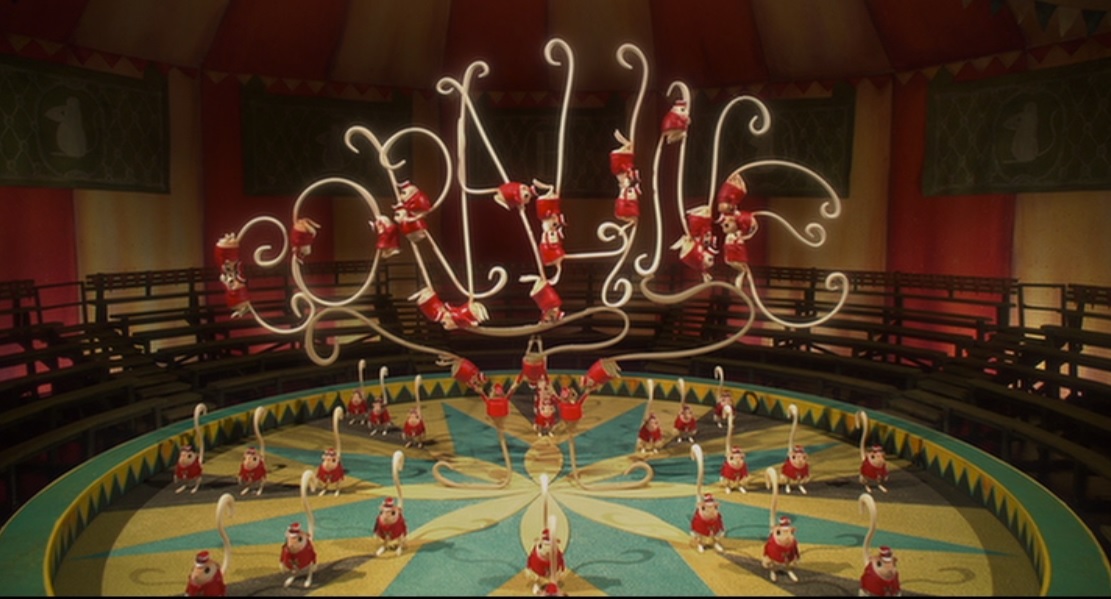
In the Other Mother’s world, Coraline is never mistaken for “Caroline” as is consistently the case in the real world. The Other circus mice make a point of spelling her name correctly during their “Welcome Home” performance. An outline of Coraline’s face is even the main design feature of the garden in the Other World. The universe consists of alternately-dressed versions of the protagonist reflected back to him or her over and over again. The more personalized and subjectively accurate these reflections are, the more likely something is amiss. The Other Mother promises a variety of color options for her daughter’s future button eyes, yet viewers only ever see black button eyes on the Other Mother and her creations.
The only living witness to the Other Mother’s true crimes in Coraline is an elderly woman assumed to have lost her wits. Wybie’s grandmother is left to her ramblings with a polite, if strained, deference only her age itself allows. She is like the Greek figure of Cassandra, who utters prophecies that ultimately come true but are never believed by others. Catastrophe cannot be averted, which defeats the whole purpose of being able to forecast the future.
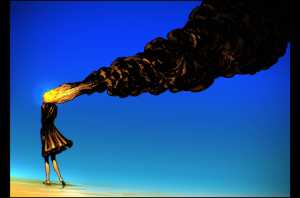
Much like an adult attempting to shield a child from the dangers of the world outside, the preservation of innocence is associated with a limited access to memory. Memory loss is often depicted as a coping mechanism in relation to trauma. When a limb turns necrotic or otherwise, it must be cut off to prevent the spread to other parts of the body. Parental figures are rendered distant, misguided, disillusioned, or otherwise ineffectual in a psychological effort to preserve childhood innocence. Without parental protection, emotional suppression is done in the hopes of self-preservation. However, cutting off the limb does not completely abolish the phenomenon of phantom limb syndrome. Hauntings and ghostly resurrections come as a result of unresolved trauma within the protagonist’s life. The aftereffects of a long-assumed-dead virus show up many years later because its presence went undetected.
As an only child, the Other Mother’s focus on Coraline is undiluted as well. The existence of any other children is never mentioned. Coraline gets to be the golden child, the trouble-making “black sheep” of the family, and the overlooked middle child all wrapped into one. The Other Mother will adapt her style of mothering accordingly, leaving Coraline habitually unsure as to what the Other Mother sees of value within her. Such erratic pivoting from open-hearted affection to disdain and then to indifference is common in narcissistic abuse. It renders Coraline’s position within the Other Mother’s affections precarious and continually subject to change.
Kubo’s story is told over and over again. Sometimes to the film audience, sometimes to the crowd in the street when Kubo goes busking for money, and sometimes to the characters (including Kubo himself). One is unsure who the target audience is… “me” as the viewer, “them” as bystanders to this tale, or “Kubo” as the designated protagonist and hero. This lopsided and off-balance feeling that is provoked in the viewer highlights the precariousness of perspective. Oscillation, the variation from intense focus to a wide and expansive perspective, shows that Kubo and the Two Strings understands one cannot by any means see clearly by a single look or angle alone. Just before Kubo busks in the street, Kameyo hints that Kubo never winds up finishing his story whenever he performs. There is no beginning, middle and end contained within concrete parameters.
The protagonist’s amnesia, a result of psychological dislocation and dismemberment, makes identity theft inevitable. In Coraline, this is defined by a covert switch in language. The Other Mother shifts her use of descriptors, marking the eventual erasure of her victim’s identity. At first, she acknowledges that she is only Coraline’s “Other Mother.” A better one perhaps, but one with an alternative… an original for Coraline to compare her with. That soon changes. When Coraline starts to long for her “real” mother, the Other Mother refuses to acknowledge her existence.
The Other Mother turns others into beings similar to herself as some sort of violent expression of loneliness. A visible illustration of this is a patchwork design. The limbs of her victims, their memories and signposts of individual identity, can always be pulled apart and reconstructed at random into new dolls. The melding together of disparate and reusable fabrics, much like Dr. Frankenstein’s monster, is an amalgamation of miscellaneous and nameless cadaver parts.
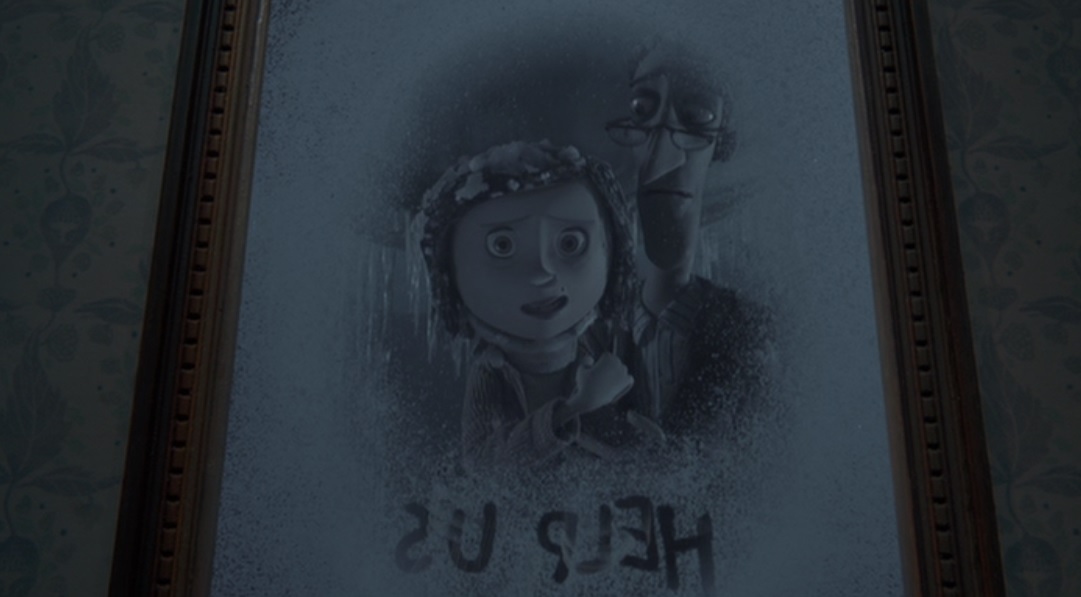
When the Other Mother creates a makeshift doll of Coraline’s parents to trap them in her world, there is a marked difference in the experience. Coraline’s mother and father become two sides of the same doll. It is not only a sign of haste, but of inexperience. The Other Mother’s cloth-bound depiction of adults is a crude, childlike imitation while their flesh-and-blood bodies are secreted away in a tiny snow globe enclosure. Only a small, limited world is made for them and, unlike with Coraline, there is no pretense the case would be any different. A vision of her trapped parents first appear to Coraline in a mirror’s reflection. A mirror is assumed to be honest because it is a reflective surface, only capable of showing what is already given to it. However, mirrors also have the habit of making the small rooms they occupy appear far more spacious than they actually are.
This double-sided doll may also be a reflection of how children view their parents. They are a single unit, a unification and embodiment of two separate entities that formed the child as a singular existence. Parents cannot be conceived of as two different individuals who have the possibility of diverging, of walking away from both each other and the child. Instead they must be conjoined twins of a sort, limbs able to move about freely but otherwise pinned to the spot by their genetic union. It also appears to unintentionally reflect the Other Mother’s poor understanding of parenthood. For her, parenthood consists of a single monstrous entity with no complementary opposite to challenge or tamper with its level of control over the child.
However, a subtle identity theft is not always a fatality. The Other Mother cannot easily reshape adults from scratch. Most adults are heavily set in their ways, locked in a repeated set of patterns and habits not as easily subject to change from external forces. Children are more malleable since they are experiencing that process of individuation in its early stages. Thus, children are more readily and heavily affected by the world because it is still relatively new and unpredictable to them. This is evident when Coraline’s parents have been rescued, as they retain no memories of their previous imprisonment. Despite the unusual circumstances of their kidnapping, things go on just as before as if nothing awful had happened to them.
When the Moon King is defeated by the end of Kubo and the Two Strings, the other half of the moon which was once always hidden from view is suddenly and startlingly revealed. The imposing and ominous Moon King is now a frail, elderly man prone to forgetfulness. Without being aware of it, he is much like The Wizard of Oz, a simple man hiding beneath a smokescreen and behind a booming megaphone. The Moon King of Kubo and the Two Strings is reborn into a better man when the people around him choose to address him differently. Focus is shifted from his being the “Moon King” to his simply being Kubo’s grandfather.
“What happened to your eye?” – Kubo’s grandfather, formerly known as the Moon King
His vision is no longer directed toward a self-appointed (or at least self-inhabited) title and the hierarchical power it encourages, but on a boy who must be cared for and protected. Unlike with Kubo, the Moon King must rid himself of “self-consciousness.” He must forget who he thinks he is in order to become himself in the truest sense of the word. Identity here is not simply about ancestral inheritance or self-individuation, but what is crafted in an on-going dialogue between the individual and his environment. Upon losing his memory, the first thing Kubo’s grandfather compassionately inquires about is what is self-evident, Kubo’s missing eye. Kubo’s aunts, Karasu and Washi, ask this same question upon first meeting their nephew but it is only to taunt and frighten him. When Kubo’s grandfather reiterates the statement, it is about the recognition of the essence or core of something. A good first step toward healing often requires being able to state the obvious, before it gets lost somewhere in the shadows.
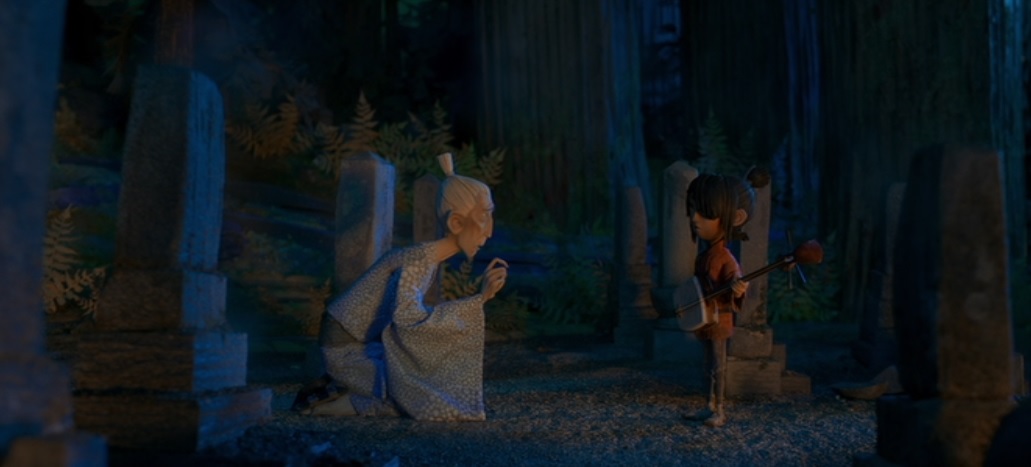
The Moon King is told a revised historical account of his life, that he is a kind man who selflessly helps others and is beloved by his community. This is hardly a white lie, something so insignificant that others would scarcely notice the difference between an internal decision and an external reality. This level of forgiveness is all the more potent because it is the victim who erases memories of wrongdoing from the perpetrator instead of the reverse. The memories, potent and long-standing, remain intact for the ones who likely suffer most from their impact.
It assumes traumas are not just erratic blips in an otherwise ascending line graph, but signs of an ongoing heartbeat. Reincarnation as a concept involves accruing many lives, the past ones serving as vehicles for greater understanding and thus compassion. Until one “gets it right,” the individual will be bound again and again to the spokes on the wheel of life. All these accumulated experiences remain asleep within individuals during their current lives until moments of déjà vu interrupt this slumber. It is essentially keeping one eye open while the other remains closed, something Kubo knows all too well. To ensure one’s vision is neither static nor contaminated, the eye must occasionally shut itself down and know it won’t die doing so.
When Rubbing Eyes Removes the Grit: Threats to the Act of Remembrance
When Kubo is being taught survival lessons by his parents, in disguise as Monkey and Beetle, he is given an important instruction. Hanzo tells him that when shooting an arrow, in order to hit the target properly, one must close one eye. There is an obvious joke here since Kubo is already missing the one eye he would have needed to close in the first place. However, the underlying suggestion here is that an individual must walk to where one’s headed half-blind. It is echoed in Monkey and Beetle’s disparate self-knowledge, with only Beetle needing to be told by another that he is actually Kubo’s father. Beetle’s memory issues are an echo of exiled Sariatu’s sporadic amnesia. Perhaps it is also an exercise in having faith, trusting in something so completely even when one does not have all the facts at one’s disposal.
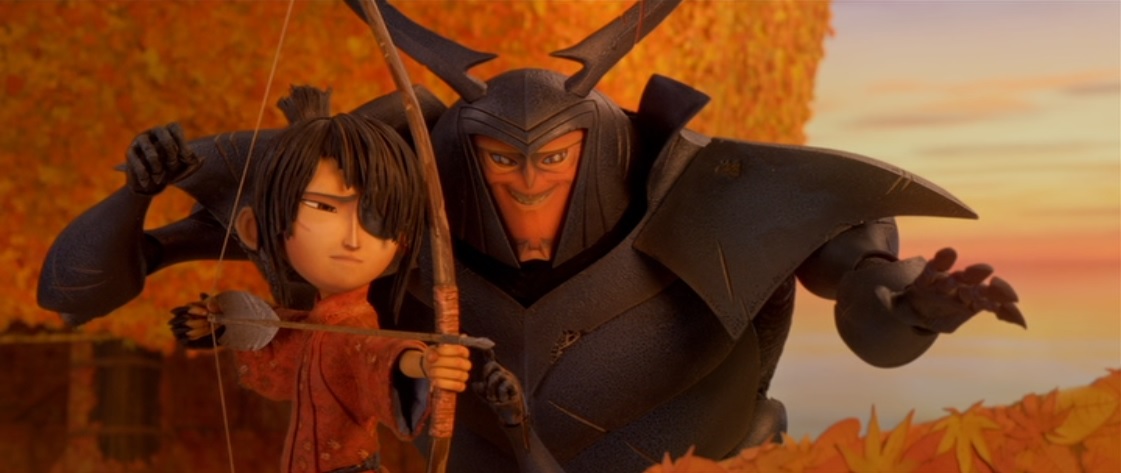
This may be a comment on human existence as a whole, with one eye fully analyzing the past and the other completely blind to what awaits. Or perhaps the reverse is true? Perhaps the watchful eye is heavily attuned to predictions of the future while the blind eye is oblivious to the nest of subconscious habits buried in the past. This philosophy goes against everything both the Moon King and the Other Mother stand for. They go to great lengths to remove themselves from human faculties altogether.
“As long as you cling to that silly, useless eye you can’t come up to live with me… in the heavens! You’ll be stuck down here, in this hell, staring with that lonely eye at hate and heartache and suffering and death. Where I want to take you, we have none of those things. It’ll be just you with your family, where you belong… [y]ou will be beyond stories. You will be immortal. You will be infinite.” – The Moon King
From Kubo and the Two Strings.
This is where Kubo’s existence threatens theirs, its singularity the essence of defiance. Individuality is automatically assumed to be the same as loneliness. However, the Moon King does not much admire community either. The Moon King, held sterile and aloft in his starry kingdom, looks upon humanity with barely disguised derision and contempt. The Moon Kingdom’s predilection towards surveillance makes it blind to the intricacies of human affairs. Kubo’s existence represents the willingness to be fleshy and soul-filled, to experience the heights of mortal joy as well as deep wells of sorrow. His parents’ wish is for him to be “of the world,” to be fully immersed in it. The eye, after all, is not simply a recording device but a vehicle for perception and one of the most vulnerable parts of the body. Cameras can watch, but cannot be enraptured by what they see and construct meaning from it as eyes would.
The moon itself has plenty of scars, evident in its pock-marked exterior. It is not an ironed-out, imperfection-free landscape as the Moon King might lead others to believe. Craters that litter the lunar surface are evidence of a violent and complicated history. An eye patch, such as the one Kubo sports, makes no attempts at pretending the eye underneath is still intact. The black fashion accessory is a more palatable stand-in for a cavity in the skull. However, it still serves as a subtle reminder of loss as opposed to a glass eye posing as its organic counterpart. The Moon King misunderstands and abuses religious concepts pertaining to earthly attachments, falsely believing one can avoid or reject suffering as opposed to accepting its existence and moving through it.
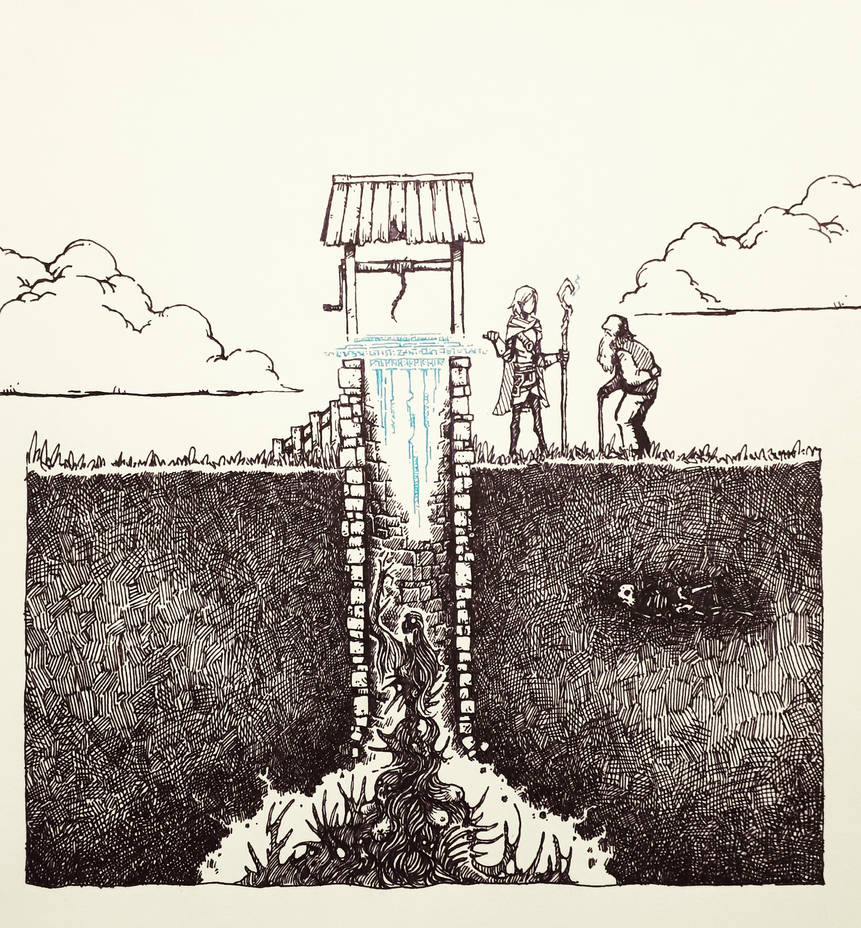
The cavernous quality of a missing eye is perhaps a reflection on the famous quote of Friedrich Nietzsche’s about staring too long into the abyss. The Other Mother and the Moon King are motivated by fear to do evil. This same fear is obviously present in their victims, Coraline and Kubo, as well. They must be wary of turning into what they are related to, or put even more simply, what they spend too much time with. 15 Conversely, humans also have a knack for locking away the things that frighten them, out of sight and out of mind, which may just allow them to fester. During the Puritanical era of witch-hunting, one of the tests a suspected witch was put through in an attempt to prove guilt was drowning. The popular belief was a regular human being would sink like a stone, but a witch would float. This of course meant those falsely charged could only prove their innocence by evidence of their death. 16
Whether or not the accused was actually a witch does not seem to matter much. Either way, the anomalous oddity within the “normal” community is dealt with by being disposed of. Even if he or she was simply an eccentric human being, it is safer for the town to merely think upon the individual as an unfortunate soul now safely tucked away in the heavens… or the hells, as the case may be. The well in Coraline achieves a similar role by burying away any traces of the Other Mother, just as the Other Mother attempts to erase the ghost children. By weighing down the remnants of the Other Mother’s power source with a rock, Coraline is essentially rendering her mortal.
The void may indeed be a terror, but it is not all doom and gloom. A cave is where shamans retreat from civilization to commune with the natural rhythms of the universe. The well in Coraline acquires a double-meaning, as a place where evil might hibernate as well as a source of hidden knowledge. Wells are often considered reservoirs for sustaining life, being the focal point of a community as a water source. It also represents limitless potential. Who knows how far down it stretches? Perhaps to the center of the Earth, as anyone’s guess may be. In the days of quill pens, a writer was lost without his ink well.
Ancestral Illumination from Mined States
What about the view of the sky from the perspective of the well? The Sun and the Moon are both known as luminaries, celestial bodies that give off light. Eyes, on the other hand, are recipients that capture and filter light. Unlike many other mythological traditions, the gender assumed by the Moon (Tsukuyomi) is male while the Sun (Amaterasu) is presumed female in Japanese mythology. 17 Perhaps this is because the Sun exists as a type of motherly presence, her warmth-giving light allowing for creation to exist in the first place. Because of Kubo and the Two Strings‘s Japanese setting, one can assume a similar designation for the Sun and the Moon.
Kubo’s traumatic loss of his mother suggests a complicated relationship to the Sun. All living things require warmth, both in the physical and psychological sense. Individuals linger where warmth can be found and ultimately require the sustenance it provides. Thus the need to survive becomes inevitably bound up with the image of maternal refuge, the womb or the den one collapses into when one is world-weary and depleted by an environment seemingly intent on snuffing them out.
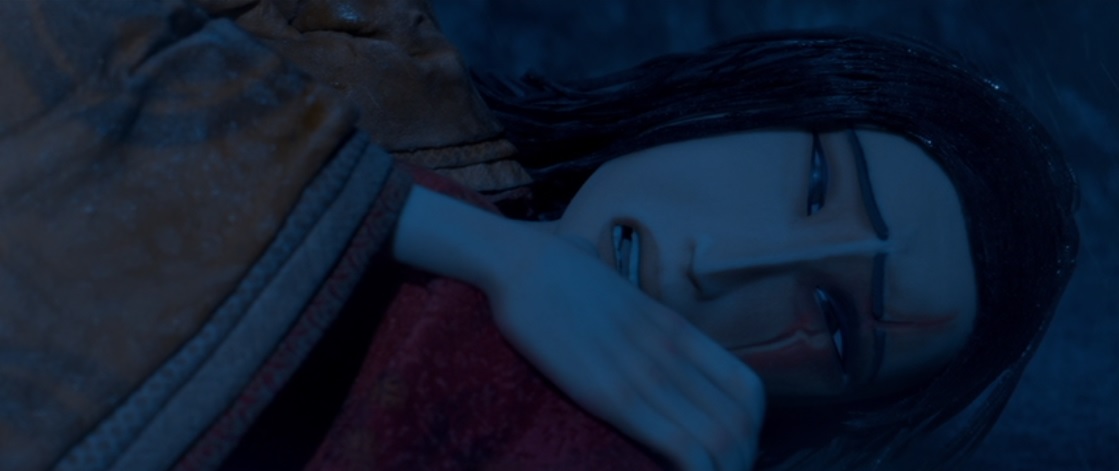
Sariatu is literally Kubo’s savior, the woman who rescues him from their murderous relations and pulls him from all-consuming waves and onto the beach when he is just a helpless baby. His mother’s moments of mental clarity during his childhood are brief but all the more potent and enticing for being so. His mother’s stories of defying her family are hazardous “lightning strike” epiphanies, an unexpected solar flare bursting forth. Her flashes of enthusiasm and newfound energy quickly dissipate the longer she tries to keep the momentum going. As with the Earthly experience of the Sun, the sought-after heat and light is met with daily trepidation as well as expectation. A sunset is a ritual mourning. As a light-craving plant will instinctively tilt its leaves in the direction of the Sun when given the chance, Kubo’s love for his mother is a primal force that guides him… even when he ultimately disobeys her one and only rule of hiding when the Sun sets. Sariatu predicts her own disappearance by acknowledging the danger of a sunset, and the jeopardy this puts her son in, before the bitter reality dawns upon Kubo.
Since Kubo never meets his father as a man, his connection to the Moon is limited. This makes any symbolic associations with the moon far more fanciful and mystical in nature. His aunts are white-masked and puppet-like, expressionless and sterile, as if they had just stepped out of a kabuki stage performance. His grandfather’s primal alter-ego is the Moon Beast, a creature that resembles an ancient Dunkleosteus. Even his mother, originally a daughter of the Moon, for much of the day exists in a type of depressed trance that forces Kubo to look after her as though he were the parent.
The Earth’s moon is one of the largest in our solar system. This unusually large moon means Kubo’s grandfather looms over the night sky with his presence. The Moon hangs in the sky like a giant spotlight that keeps a silent vigil in search of him. It is also locked in its orbit. No matter where one is located on the planet, Earthlings always see the same side of the Moon. Unless one is projected into space, the dark side of the Moon is never visible. This means the Moon King never turns his back on Kubo. It also means Kubo is limited to viewing his grandfather in only one way. He exists in mythic proportions only, not as a mortal man.
When Kubo searches for the “Breastplate Impenetrable” in Kubo and the Two Strings, he falls into a world of underwater threats and undergoes an embryonic fight to reclaim his vision. According to Japanese mythology, Amaterasu the Sun god was born from the creation deity Izanagi’s left eye and Tsukuyomi the Moon god from his right. Their births occur when Izanagi goes to bathe in a river to cleanse himself after contact with the dead. 18 Since it is Kubo’s left eye that is lost, it is the Sun that must be reclaimed. It also suggests illumination and insight are born out of submersion and purification. The eyes are a fluid-filled apparatus that require lubrication and cleansing, via the production of tears and blinking to disperse these tears, in order to remain healthy. 19 In order to defeat the Moon King, Kubo must not only relinquish the sought-after Sun and allow it to set but bring the mythic Moon down to Earth.
A Place Where the Sun Never Sets
The Sun is commonly viewed as a precious, but nonetheless constant, entity that seems to have always been there. Humanity cannot conceive of life without it. If one were to wake-up and the Sun suddenly went missing, its absence could not go unmissed or unnoticed. Any light and/or heat-reliant life-form would surely perish and there would be nothing to distinguish “day” time from “night” time. There would be an eternal sameness.
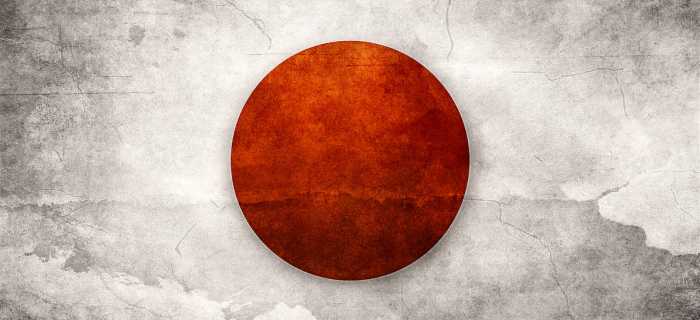
Another name for Japan, the setting for Kubo and the Two Strings, is “The Land of the Rising Sun.” Emperors and kings are often thought to be either descendants of or gods-incarnate. “The empire on which the Sun never sets” was a notable phrase assigned as propaganda for the British Empire when it was a reigning naval power. The life-giving symbolism of the Sun is ascribed to both of these nations as a result of the comparison.
With such a predominant focus on Moon symbolism within his family, Kubo acting as a representative of the Sun would seem unlikely. However, the incremental acquirement of his warrior armor suggests otherwise. During Kubo’s quest, he must acquire several pieces of armor before he can successfully face off against the Moon King, who essentially bears the same armor but with a key symbolic difference. The sword, the breastplate, and the helmet Kubo must acquire all bear an image of the Sun instead.
With Kubo’s sword, the Sun is shining in its full glory but physically shifted over to the less obvious location of the hilt. Thus the Sun’s power is both confined to and concealed by the the one who wields it. The breastplate, needed to protect a warrior’s heart, depicts the Sun more prominently. It also stands defiantly against the Moon King, by mirroring and opposing his own choice of armor. The helmet is more ostentatious in its presentation, perhaps because it is the culmination, the “crowning” achievement of all the armor put together.
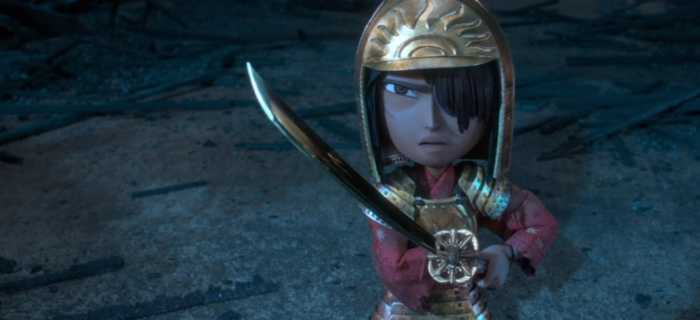
The material quality of Kubo’s helmet is iridescent and it glints with a self-possessed confidence. It combines the images of the Sun completely exposed on the top of his head as well as a sunrise/sunset coming into view on Kubo’s forehead. This forehead area is the only piece of the armor which suggests half of the sun, giving viewers an ambiguous idea as to whether the dawn is coming to an end or just beginning.
The Sun ornament atop the helmet and Kubo’s usual topknot combine the images of a common Japanese hairstyle with the crown chakra, the highest level of consciousness. With each item he fights for and collects, Kubo sheds a little more light on both his past and future. Against the dark and cold universe that threatens to swallow up the seemingly insignificant lifeforms that populate it, the hero must assert himself and shape meaningful patterns out of meaningless chaos. With his origami-animating powers, Kubo has a life-giving force just as the Sun does.
The Moon, on the other hand, is responsible for mostly invisible work. It literally works the night shift, becoming the unseen watchman when many are (or at least, supposed to be) sleeping. Its light beams do not rouse people from their beds with warmth or a blinding glare. It does not inspire the flowers to bloom anew or melt the morning frost on the front lawn. Its power goes mostly unrecognized and therefore underappreciated. It nonetheless remains a powerful compass, a guiding force for those who must traverse in darkness. Despite being a sworn enemy, a man who is not above killing his own progeny to ensure perfection, it is the Moon King who leads Kubo onward towards his destiny.
The Other Mother fashions Coraline’s dream world into a place of eternal sunshine, an idyllic childhood playground. Her parents are utterly enraptured by her every word. She can have ice cream for breakfast, never have to set foot in a schoolyard again if she doesn’t want to, and splash around in muddy puddles that get her clothes dirty. However, all these golden promises are entangled in a Faustian bargain, an all-important contractual catch hidden in the fine print.
In Coraline’s riddle game with the Other Mother, impending doom is written in the sky. The shadowy impression of a button threatens to block out the Moon for every second Coraline wastes in not retrieving a lost ghost eye. The waxing and waning phases of the moon become a symbolic representation of an all-seeing eye in the sky. An eye-like moon may blink or have its view blocked, but a black button-eyed moon is always watching. It is an eye sewn open and made permanently awake. It is an eye that is all pupil and no iris or sclera. 20
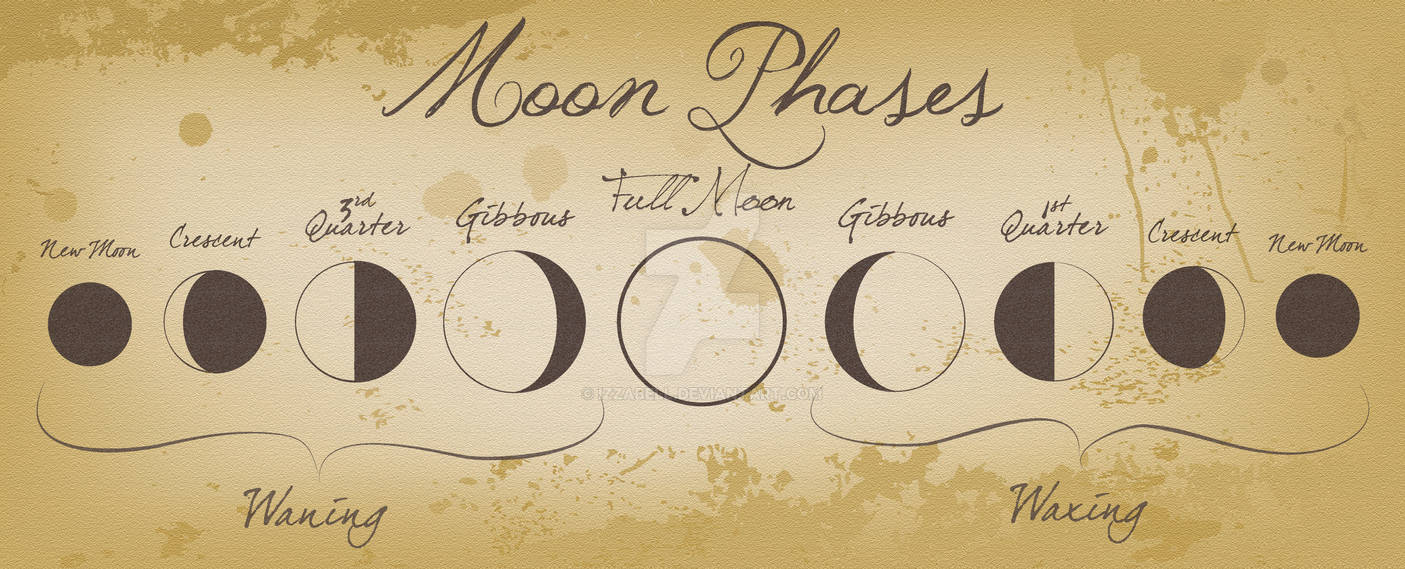
A black button replacement flattens the eye from a moveable three-dimensional orb into a thin, dry sheet fastened firmly into place. This implies a lack of mobility, a reason for the world to become a little lopsided and rigid as a result. The atlas is turned from a globe into a map and all movement is therefore reigned in and made observable. With one wrong turn, one risks going over the precipice at the edges of the world. The boundaries of this world are well-defined, making it a panopticon where no existence (let alone, action) goes undetected.
A black button also evokes the image of dilated eye. Aside from its use at the ophthalmologist’s office, a dilated eye is a bodily response to unusual stimuli. It can signify sexual/romantic attraction, a wish to see more clearly in a dimly-lit room, a fear-based reaction also known as the “fight or flight” response, or act as the result of injury done to the eye. In other words, it tends to activate under intense or stressful situations. It is not a typical sign of relaxation and ease. This should be a clue to anyone who gets a little too comfortable within the Other Mother’s world that they should remain on-guard at all times.
Possession is 20/10 of the Law
One might even mistake the symbolism of Japan’s flag for an eye with a red pupil. Red pupils are most apparent in blurry photographs, known as a “red-eye effect” in photography. This can give the subject the appearance of being possessed. This demonic aesthetic also conjures up images of a “blood moon,” which is the reddish tinge the moon takes on when fully eclipsed. This natural phenomenon, also known as a “total lunar eclipse,” is considered a bad omen in the biblical sense.
During Coraline’s game with the Other Mother, the imagery of winning each task has a certain repetition to it. Each button fairly-won ends in an almost-biblical swarm. Symbolic rejection of the Other Mother ends in a smothering of this opposing, anomalous, and independent force. Miss Spink and Miss Forcible’s dog-bats, guarding the second eye like slumbering beasts in a lair, suddenly awaken and descend upon an escaping Coraline. The Other Mr. Bobinsky conveys the desperation of potentially losing the final eye and when backed into a corner, he attempts to talk his way out of defeat like a devil in the desert. Mr. Bobinsky’s circus mice become a plague of rats. It is a prophetic sign just as any raiding swarm of locusts might be.
“Oh, my twitchy-witchy girl. I think you are so nice. I give you bowls of porridge and I give you bowls of ice… cream! I give you lots of kisses and I give you lots of hugs, but I never give you sandwiches with bugs in.” – Coraline
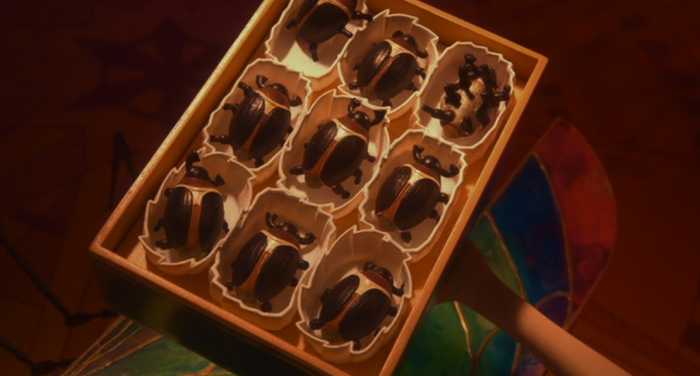
Possession takes over suddenly, jarringly. In the lyrical rhyme Coraline sings to herself, from the point of view of a maternal figure, she appears to conjure a self-protective spell. Perhaps without realizing, Coraline is acknowledging and speaking aloud her wishes for a mother who is both vigilant and affectionate. Though it appears to invoke the Other Mother’s presence, the mother Coraline sings of here is somewhere in-between the Other Mother and her actual mother. This mother is aware of her child’s propensity for mischief, bookending the element of witchcraft as fun at first with the potential for unsavory results by the end of the short ditty. She provides her with both exciting, forbidden desserts as well as nutritional food meant to fortify her. The song ends with unsettling imagery, of food turning rancid when one takes a second glance at it, to display the erratic and abrupt decay of decadence. In a tactic of reverse psychology, it accidentally conjures up the image it feigns to protect its audience from. Ravenous, burrowed insects emerging from delicious-looking food is a notable sign of expulsion, of being violently cast out of heaven and into hell.
When Sariatu disobeys her family’s wishes, she escapes with the infant Kubo during a torrential ocean storm only to wash up on a beach. The two of them are followed by a massive wave the Moon King conjures up in defiance. The wave is reminiscent of Hokusai’s famous woodblock masterpiece, threatening to swallow them whole. There is no undoing the initial transgression since it happens in one fell swoop. It is not the peaceable dissolution of an old treaty, but a violent banishment, supposedly from Eden.
The Sun may serve as a picturesque, but precarious driving force with an Eden-like promised land at the end of the rainbow. However, when the Moon takes on the role of storyteller, a powerful but coy force, the characters involved are in for a rude awakening. The Moon has a strong symbolic association with mental health because its mysterious and changeable nature best reflects the mind itself, constantly fluctuating and seemingly untamed despite one’s best attempts at domesticating it. “Lunacy” is an antiquated term used to describe “madness” or mental instability, once thought to originate according to the whims of the moon. If the Moon plays such a symbolic role in both Coraline and Kubo and the Two Strings, what does this mean for its main characters?
Demonic threats are only possible because of possession. Possession requires the forfeiture of one’s mind to an exploitative power seemingly stronger than oneself. Sometimes this can occur without the victim even realizing it. This is where the idea of “evil eye,” or a curse that descends upon a person because of a malevolent glare cast on him or her when caught unawares, becomes prevalent. As both Coraline and Kubo and the Two Strings illustrate, young children are believed to be especially vulnerable to such misfortune. 21 To survive the psychological assault requires keen eyesight, something far exceeding the gold standard of 20/20 vision. Possession is typically considered a bad thing, but perhaps it is not always so. Self-possession is a state in which the hero comes to knowingly stand within the contours of his personal destiny.
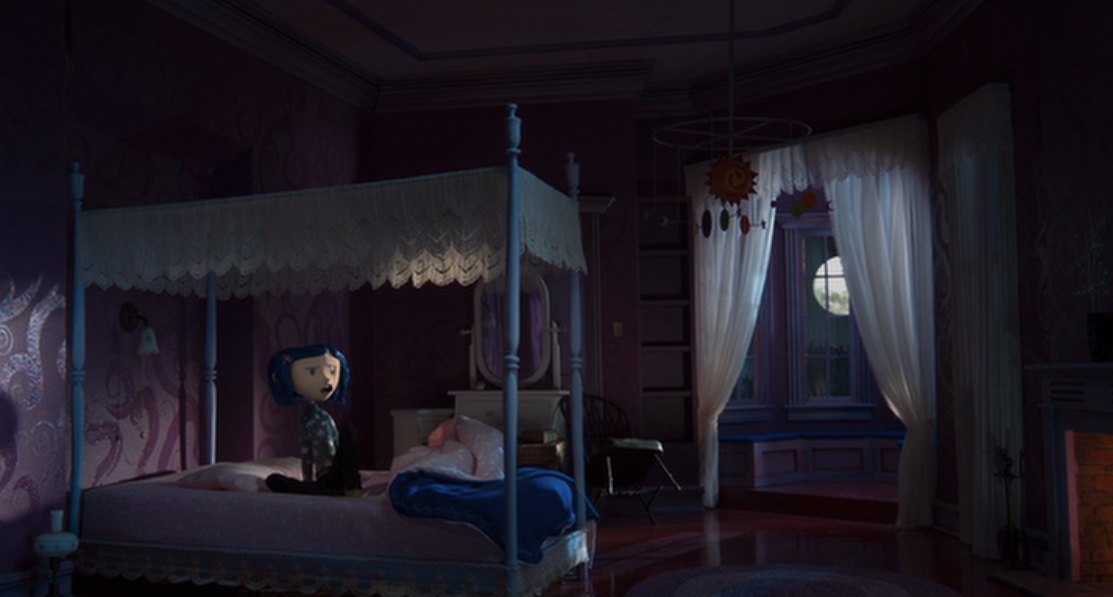
Coraline has her nights stolen from her and re-shaped by the Other Mother. The Moon, a symbol of the unconscious and the internal dreamscape, is not inherently bad. It has simply been hijacked and used for ill. The nights are when the human mind is allowed free rein, unencumbered by all the real-time sensory data it must make sense of when interacting with the physical world of the daytime. One is allowed to wander aimlessly within the mind’s sea of images. Sleep exists as a type of harmless death, a suspended animation that serves to digest the events of the day and make sense of them.
The Other Mother’s version of sleep does not exist simply in the comforts of one’s bedroom, but as sleepwalking through the world. It serves as an amusement park that is not merely a distraction, but poses a serious danger to the sleepwalker. Her methods are even more insidious and lethal than if she replicated sleep paralysis, whose visceral shocks to the body no sleeper would wish to revisit in another episode. A sleepwalker may simply get up in the middle of the night to grab a glass of milk from the fridge, but he or she might also attempt to get behind the wheel or cross a bustling and barely-lit street. Engaging with the moon in its natural state is like a kid making a rocket ship out of a cardboard box, a paper towel roll, and some string. Engaging with the Other Mother’s hijacked version of the moon, curated to be the most addictive and replayable experience, is like a company-manufactured virtual reality that consistently adapts to its user’s likes and dislikes. Its chief interest is keeping the user plugged-in, not in maintaining the user’s well-being.
Both Kubo and Coraline must get in possession of themselves in order to succeed against the forces that beleaguer them. This requires an acceptance of change despite their respective enemy’s alluring promises of keeping everything blissfully serene and untroubled. To do this, they must take heed of the victims that now litter the floor around them. As with the film Inception, one must revisit dreams and pay attention to the little details that do not seem to add up in order to separate fiction from reality. This is no easy feat since the mind prefers an illusion of a pattern over noticing disruptions that make one aware of discord.
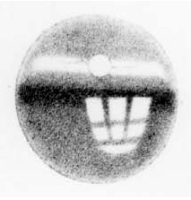
Optography is a now-debunked field of study once used in forensics. It presumed the eye could act as a type of camera, where one could retrieve the roll of film within the retina and determine what the last images a dead person observed were. 23 Were it possible to use, it would go a step farther than typical forensic evidence. It is different than the Sherlockian second-hand clues of inconsistent alibis, a strand of hair, or even blood spatter. The intact eye of the deceased victim would essentially function like an instant film camera and capture the perpetrator in the act of killing.
Since the ghost children have button eyes of their own, their ill-gotten connection to the Other Mother is unmistakable. They have been physically branded by the Other Mother’s trademark signature. However, it simultaneously acts as a lens cover, attempting to block out the crime scene from being seen by prying eyes. Since buttons were sewn into their eyes, a button must have been the last image they ever saw. Though the button eyes are not captured images impressed upon the retina, they are nonetheless an incriminating characteristic that point to no one else but the Other Mother. The blurred and distorted afterimages that are now their ghostly forms capture the pained expressions and sorrowful moment of their deaths. However, they remain fixated on a single goal, identifying their killer by recreating their own final moments. The main difference here between the ghost children and an optogram, and their great power, is that the ghost children are not simply a single and static image but a reel of film that can be rewound from its final frame.
Prophecy is often shown through orbs, which are eye-like in appearance. To interpret visions to one’s own advantage is equated with seeing something clearly, which also means seeing something “through.” Ghosts, by design, are always see-through. In this way, one can grab hold of and possess a certain degree of power over events that have yet to transpire. In Kubo and the Two Strings, it is heavily implied that direct eye contact is involved in accurately accomplishing this. As with the superstitions surrounding “evil eye,” an intense gaze of ill-will must be not only be noticed but returned if one hopes to ward off evil. Even with the mere illustration of a disembodied eyeball, the recipient must somehow deflect the gaze. As if redirecting a laser beam with the reflective surface of a mirror, this appears to halt the curse from spreading. 24 As Kubo himself says, looking away or even blinking is to be avoided at all costs. One must have an unflinching resolve or else be prepared to start again from square one each time one fails at doing so. Steady eye contact also produces conflicted feelings within the intended target because it is both a sign of intimacy as well as aggression, mimicking the confusion over the existence of a murderous relative.
“If you must blink, do it now. Pay careful attention to everything you see and hear, no matter how unusual it may seem. And please be warned: If you fidget, if you look away, if you forget any part of what I tell you – even for an instant – then our hero will surely perish.” – Kubo
When one thinks of fortune telling, one is likely to imagine someone hunched over a mysterious globe, moving their hands over it as if one were a god directing the flow of storm patterns across the Earth. However, such a method would visually suggest the fortune-teller’s agency in conjuring the images depicted within the sphere. Coraline and Kubo and the Two Strings avoid this appearance, instead opting to play with the idea of remainders. There can be no active searching or directing traffic toward one’s goals, only noticing and observing what gets left behind. Their narratives are far more concerned with separating the wheat from the chaff during a harvest, of uncovering what is hidden from plain sight.
Miss Spink and Miss Forcible of Coraline do not employ the use of a crystal ball in their fortune-telling endeavors, but tea leaves. The message can only be revealed to Coraline once the murky water is drained away. Tea leaves settling at the bottom of a cup are no longer a signal that a relaxing afternoon tea time has come to an end, but that sinister forces are at play. However, the clump of tea leaves collected at the bottom resemble either the Other Mother’s mechanical hand or a giraffe depending on one’s perspective.
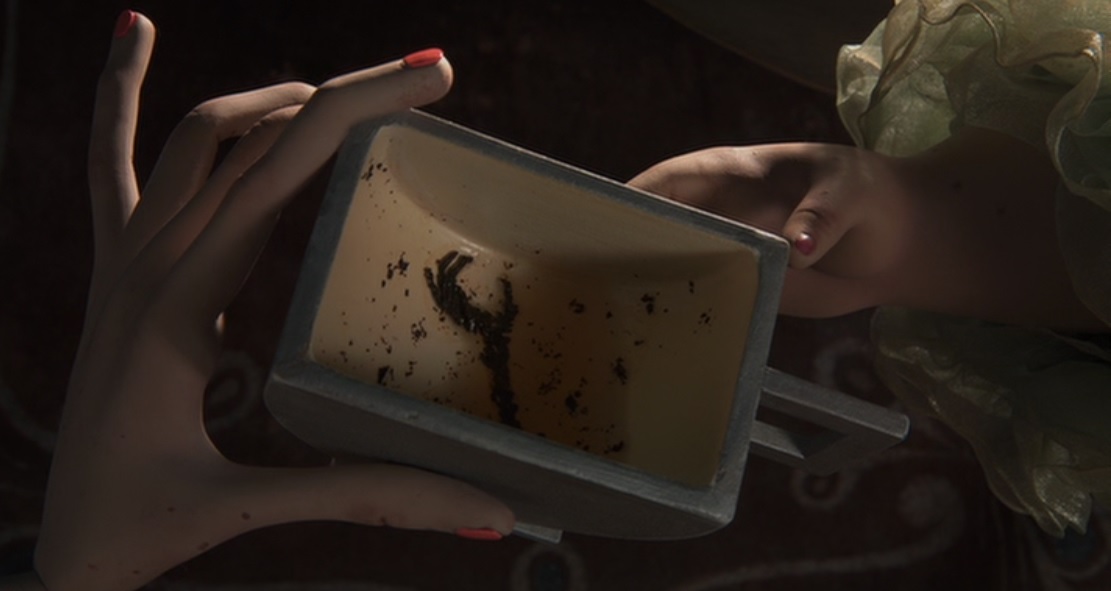
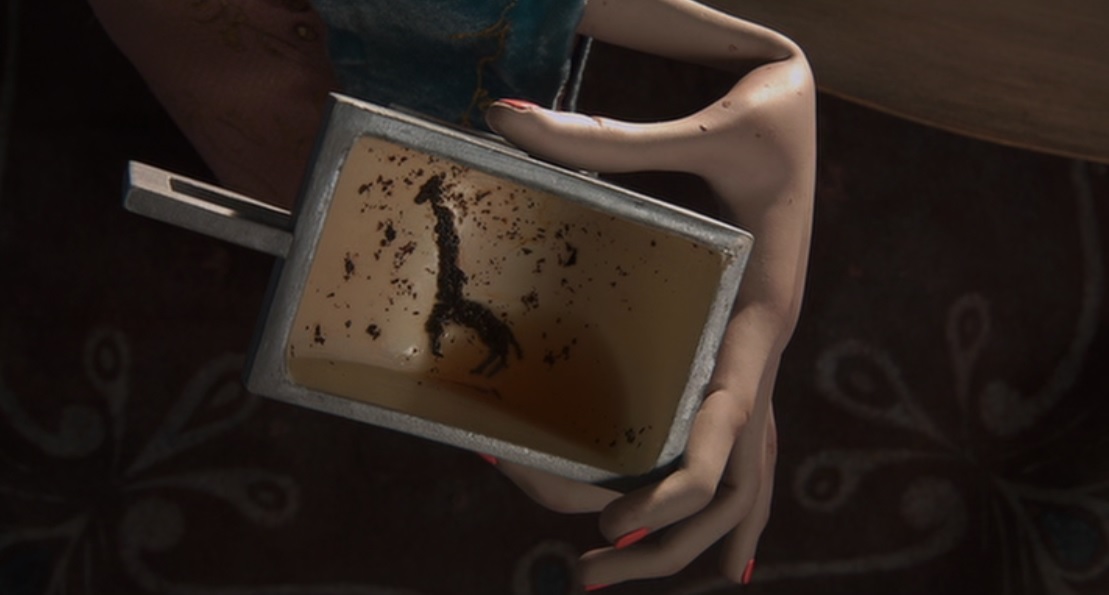
Either way, Coraline ensures there is still an individual who attempts to interpret the images for the hero or heroine, thus serving as a middle-man. Kubo and the Two Strings offers no such eloquent distance for the protagonist to take refuge in. Kubo himself must make a descent into the murky waters of the Long Lake to witness prophecy first-hand. As with Coraline, vital information is hidden in clouded, primordial depths. Much like the soothing aroma of tea, the Long Lake offers its visitors a soothing aura of security. Its womb-like qualities also lull visitors into complacency, making it easy to linger in images and dreams without attempting to replicate and enact them within waking life.
Corpus Callosum or Corpus Colosseum
In order to function one must find a way to link together all these diversions and distractions that prophecy might present one with, somehow tie together the duplicated fun-house images to find their source. All multitudinous specters must be assimilated and rendered singular in order for the protagonist to have a clear target to aim for. The corpus callosum is the area of the brain that allows for communication between the left and right hemispheres. Severing this network connection forces each hemisphere to work independently of each other, causing a great deal of difficulty for a body that must behave as if it is a cohesive unit. 25 By default, a human body lives under the illusion of singularity.
Any attempt to dismantle this belief is co-opting death, splitting apart the victim from the inside out and dissolving any sense of structural integrity. The storyteller spider feeds on this confusion, mimicking the body’s own structural breakdown and chaotic bacterial revolution in death. The Moon King wants to steal his family’s vision, and thus hopes, for individual clarity. He displays various markers of success by masking victims, inducing amnesia to confuse an internal compass, and exposing physical cavities to pluck out their sense of purpose and leave them empty. Certain spiders mimic this internal collapse within the body when killing prey, injecting venom that liquefies the internal organs into a drinkable soup.
Coraline and Kubo and the Two Strings illustrate this subtle takeover with visually-jarring changes to the body. Since eyes are expected to convey the “soul” of a person, one would expect to know when someone else is possessed. There is a deadening of the eyes. A vacant expression. Having black buttons for eyes conveys a gothic image of decay. The Other Mother’s own button eyes suggest she is already a lost soul. Kubo’s missing eye, covered by a black eye patch, conveys longing analogous to his single-stringed shamisen. There’s a lack that has a potential to be remedied somehow. Until Kubo can feel whole again, he struggles with feeling he has both a limited perspective already as well as a limited potential for self-expression. Both Coraline and Kubo and the Two Strings employ this disconcerting tactic, merging the warm, organic, and familiar with the cold, robotic, and alien. Parts of the body turn necrotic and it is up to Coraline and Kubo to prevent the spread, if reversing the process is no longer an option.
One important factor that contributes to this underlying feeling of coldness is the unrelenting persistence of perfection. As in the difference between a protective triangle and split forms, both films seem to suggest that what is odd is generally safe but what is even-numbered is usually dangerous. The Other Mother clearly hates imperfection. In the Other World, Mr. Bobinsky as well as Miss Spink and Miss Forcible are revitalized versions of their real-world counterparts. The Other Mr. Bobinsky’s mouse circus is not only up-and-running but perfectly choreographed and impressive. The Other Miss Spink and Miss Forcible are trim and more youthful-looking than ever before. Yet Coraline‘s narrative conclusion clearly suggests there is a hidden danger to be found in something that appears “too good to be true.”
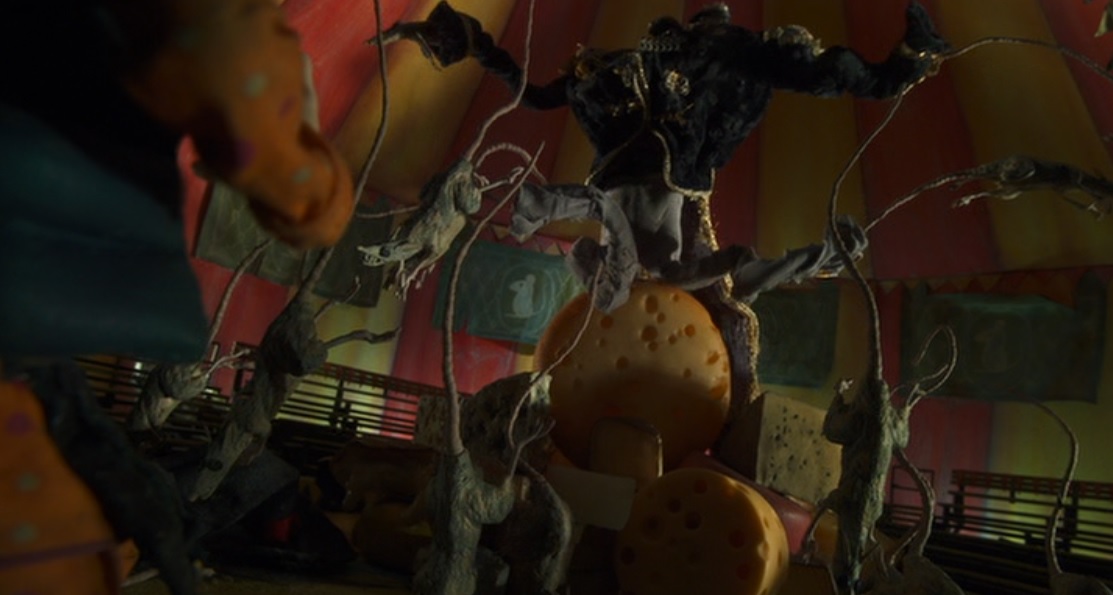
In terms of imperfection, how can the Other Mother’s own story have so many plot holes that serve to unravel the narrative she created seemingly unaided? Perhaps it is the intrusion of the ghost children’s presence that causes an internal resistance to the thought of hurting Coraline, ultimately tearing at the fabric of the Other Mother’s design. Their existence is no longer simply an intrusive virus, one that the Other Mother’s system can easily recognize and kick out immediately. The ghost children, as digested food, have been assimilated into the structure itself. They are rendered unrecognizable until intentions contrary to the Other Mother’s are revealed, but remain inextricable from the internal framework nevertheless.
This creates a world of cognitive dissonance, a force that destabilizes any action the Other Mother tries to take in her own favor. Some of this may be an attempt by the Other Mother to imitate imperfection. Her pretense of being flawed is likely a concerted effort at allaying any discomfort in her victims. Uncanny valley would, of course, make Coraline feel uneasy. While Mr. Bobinsky’s mouse circus performs without a hitch, Miss Spink and Miss Forcible initially seem little different from their real-life counterparts. They are aged, overweight, and clumsy in their attempts to outdo each other on stage. However, once they transform into their younger and more athletically-built selves… the performance takes on an entirely new flavor. They are now seamlessly in-sync with each other and can even incorporate an untested amateur, such as Coraline, into the act without a disastrous outcome.
However, not all evidence of cognitive dissonance is intentional and thus able to be reined in at a moment’s notice. Accidental internal division is evident in the civil war between the Other Mother’s puppets in their efforts to either aid or thwart Coraline’s plans. Intensity of allegiance to Coraline and disobedience toward the Other Mother varies. For example, the Other Wybie’s non-conformity is far more overt and action-oriented than the Other Father’s is. Though not every “Other” parent or neighbor behaves according to the Other Mother’s wishes, not all of them end up completely redeeming themselves when evidence of a charade is uncovered. They do not represent a consistent, united front no matter which side they choose in the moment.
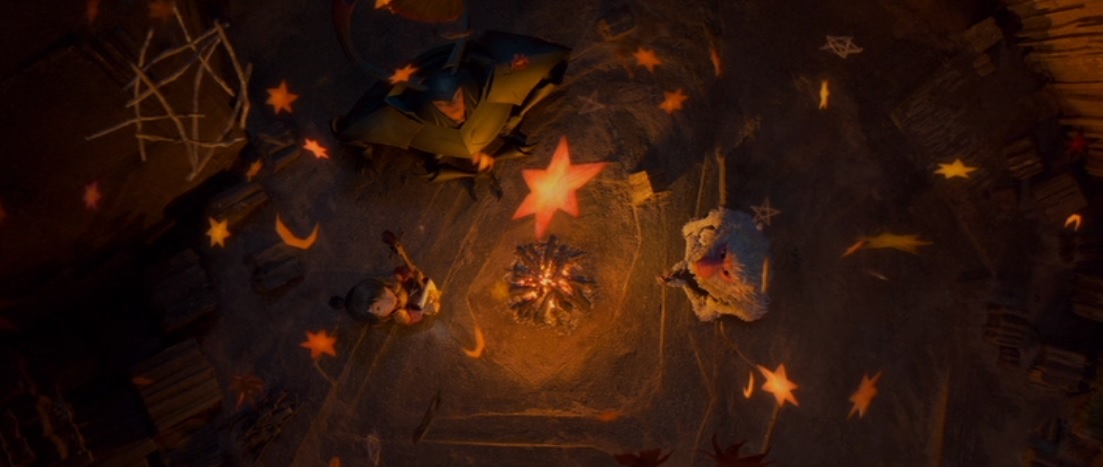
Kubo and the Two Strings also conveys a distrust of perfection. Both the Moon King and Kubo’s aunts exile Kubo’s mother from their Celestial Palace in the heavens because she is seemingly a “fallen woman.” Here, a “fallen woman” takes both a literal and figurative interpretation. She has both shirked her immortality by descending to the human world and made herself impure by having relations with an unsuitable man. Perfection here is not merely a glossy, aesthetically appealing sheen as with the Other Mother, but attains a moral significance. Only a redeemer can rectify mistakes that have been made. When Kubo helps Monkey illustrate her fall from grace during her retelling, he recreates the image of a celestial heaven using the autumn (or fall) leaves that litter the ground around them.
An important facet of early myths is the propensity for parental figures to engulf and annihilate their own progeny. The reigning body seeks to absorb all that is not a part of it. It subverts the biological impetus for producing progeny, to expel a part of oneself out into the world to live on after one’s death. This is not a bridge between two hemispheres of the brain, but one part attempting to cannibalize the other. The Other Mother and the Moon King’s lust for power is a reflection of an innate fear of being overthrown by the outside world.
Envy is a focal point of Karasu and Washi’s sisterly dynamic with Sariatu. Despite their hatred of her supposed family betrayal and her affinity for mortals, they clearly still recognize her as the mostly naturally gifted of the Moon King’s daughters. They try to capitalize on her absence in attempt to rise in acclaim in their father’s eyes. Though uncanny valley, artificiality’s attempts at imitating the natural, claims to be an improvement upon organic matter, its whole identity is predicated on imitating (and often failing to outdo) that which it dismisses.
“Oh, sister. I remember how we looked up to you. Out of all of us, you shone the brightest. Such a waste.” – Washi
From Kubo and the Two Strings.
This apparent numbness to and forgetfulness of humanity is certainly a useful defense mechanism, but it also has its fair share of limitations. What shocks Coraline out of childish compliance to a pleasing fantasy and ultimately saves her life is the fear of bodily harm. To save herself, Coraline must not only express a “No” to an authority figure but suppress her own impulse to say “Yes.” Over-indulgence eventually leads to self-annihilation. For the Moon King, this implies a figurative death but for Coraline it is death of visceral, flesh-bound consequences.
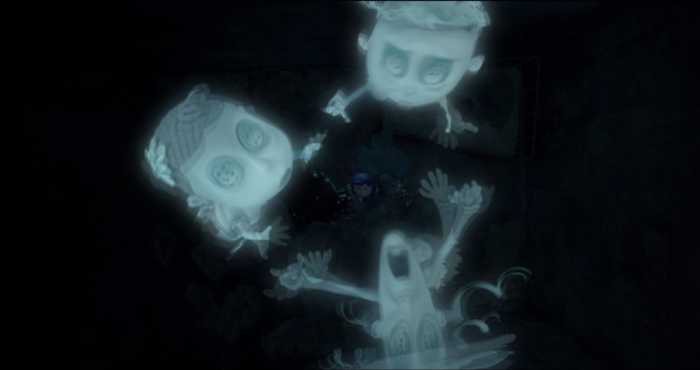
There can be a relative numbness in relation to growing up that suggests embarking on adulthood implies a type of self-forgetting. The ghost children have had their futures stolen from them and thus were never allowed to forget themselves and what was done to them. Coraline’s job is to recover childhood in order to restore that potential future. Children, at the mercy of a monstrously-sized world, have a more acute sense of just how small and vulnerable they are. To exist as more than just a ghost or a doll-in-the-making requires one to get reacquainted with the vulnerable human body, one that is is subject to injury and pain. Disassociation for too long means the body goes unclaimed and without an embodied spirit to defend it.
Oh, what big eyes you have!
“It’s so sharp you won’t feel a thing!” – the Other Father
From Coraline.
When the Other Father tries to persuade Coraline to accept the Other Mother’s button eyes, he does so by suggesting the procedure is so precise and pinpoint accurate as to be relatively painless. As an expert in her field, the Other Mother just cannot miss. Unlike the Other Mother, the Other Father makes an explicit reference to the physical process as opposed to skirting around the issue. He does not submit to obscure allusion by merely implying what accepting the button eyes would entail.
Possession first makes itself known where one often searches for signs of a soul, within the eyes of another. The famous saying goes that a mother, whether she is “Other” or not, has “eyes in the back of her head.” This is meant to strike fear, or at least hesitance, in the hearts of misbehaving children everywhere. The image seems especially sinister because it is unaccompanied by any other hint of a facial expression, such as the furrow of eyebrows or the grimace of a mouth. With masks on, the “eyes” of Kubo’s aunts are displayed as reptilian, hollowed-out slits. In contrast to Kubo’s eye patch, this appearance suggests any sign of humanity within them is likely gone for good. However, they are only aunts.
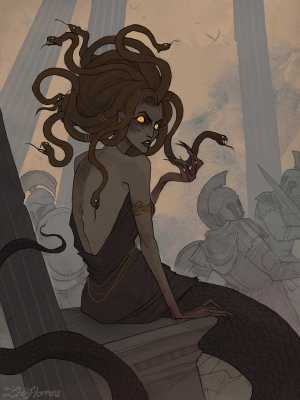
The Other Mother’s fixation on eyes is a way of eliminating witnesses to her crimes. Anyone who catches a glimpse of the Other Mother, either by accepting her button-eyes offer or by uncovering her true monstrous form, risks being rendered inanimate and trapped within her world. The ghost children’s eyes are hidden, buried away and forgotten. The Other Mother is a Medusa-like figure, stopping children’s lives in their tracks as soon as they engage with her. Yet, as viewers quickly realize, the children’s eyes are an integral foundation of the landscape. Whenever Coraline successfully retrieves one, the surrounding landscape turns gray. Capturing the eyes has a Medusa-like effect on the Other Mother’s fantasy projection as well, turning what once seemed vibrant and alive into color-drained and crumbling architectural ruins.
Corrective lenses attempt to retrain the eye to see more clearly by stepping in-between the eye and the outer environment and constructing a barrier. This is what the Other Mother and the Moon King rely on, attempting to replace one pair of spectacles for another. Coraline, with its fixation on repetition and aesthetic beauty, and Kubo and the Two Strings, with its tendency to fracture and disorient by retelling from different perspectives, combine storytelling tactics to form a kaleidoscope for viewers of the films. It presents endless, colorful possibilities where glasses are not rose-tinted but psychedelic. This provides a useful anti-dote to the Other Mother and the Moon King’s often static and predictable strategies, continually disturbing the process of eyeglass-fitting. No pair of frames appears to fit either Coraline or Kubo, though they might not at first realize it themselves.
In a less threatening world, the environment does not easily assimilate to subjective perceptions. The protagonist would be met with a feeling of multiplicity and engagement with opposition. Blurred vision causes one to question what one sees more readily. The films themselves construct an overarching mental image for the viewers, a persistently unsettling perception of the overall environment that lingers despite the Other Mother and the Moon King’s best disguises. Unlike dreams, good films tend to remain in the viewer’s mind long after the movie finishes and can be re-experienced for greater clarity. Over time, the viewer becomes a keen interloper acting on behalf of Coraline and Kubo’s interests by simply being exposed to the entirety of the Other Mother and Moon King’s worlds.
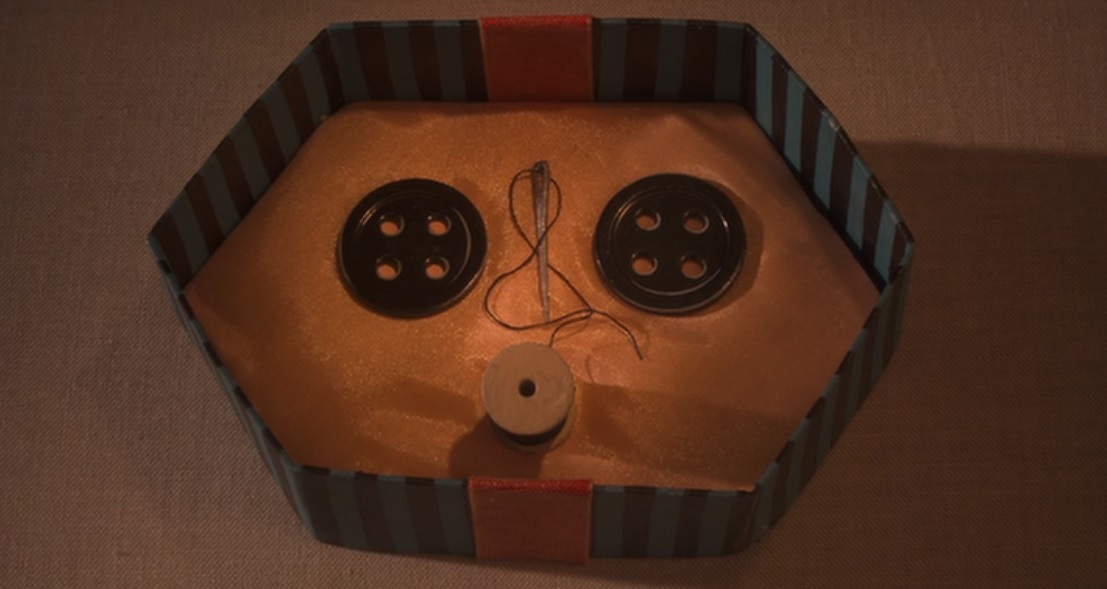
Vision is often the viewed as the dominant and preferred sense for humans, the one that the other senses tend to feed into and rely upon. The brain would have great difficulty interpreting the world the body moves around in without the existence of eyes. 26 Both films tap into the innate human fear of that faculty being tampered with, stolen, accidentally lost, or otherwise compromised. In her final battle with Coraline, the Other Mother’s button “eyes” are forcibly ripped out. It is only then that the Other Mother gets a taste of her own medicine, experiencing what she has put countless others through for her own self-gratification. In her desperation, the Other Mother becomes increasingly manic and dangerous as her ability to locate her prey is compromised.
The Moon King blinds himself, but demands others join him because “misery loves company.” The old man in Kubo’s dream, later revealed to be Kubo’s grandfather, claims he has twice as much wisdom since he has lost both eyes. The theft constitutes the opening of a gateway, an access to a deeper awareness much like the concept of enlightenment. He promises Kubo an eternal place among the stars if only he would give up his eyes. Wisdom here merely means his physical vantage point has expanded. Taking “ignorance is bliss” literally, he has been lifted high up into the heavens and everything below him now looks small and insignificant.
“I know why you want my eye. Because without it, I can’t look into another and see their soul. Their love…” – Kubo
In the film’s final showdown, Kubo’s grandfather says he does not want Kubo’s eyes for himself but for his grandson’s sake. When he is defeated, Kubo’s grandfather is not completely blind as one has been led to believe. His eyesight now mimics Kubo’s, one blinded and scarred eye with another eye in seemingly perfect condition. Perhaps this means Kubo’s grandfather was aware of the evilness of his deeds, but merely turned a blind eye in order to continue committing them. It may also suggest a further extension of Kubo’s powers, a way for the Moon King to see the world as his grandson does. When that bodily sense of vision is stolen or becomes handicapped in some way, how do the other senses step in (or not) to lighten the load?
Loose Lips Sink Ships, but Snitches Get Stitches
“Mother didn’t like it.” – the Other Father
From Coraline.
In Coraline, speech must attempt to compensate for a lack of foresight. The less one sees, the more likely one is to overcompensate with filler words. With no eyes of their own, the rebellious power of the Other Mother’s puppets is relocated to the mouth. The Other Mother is keenly aware of this danger. Whenever her puppets disobey her and the façade of perfection fades in Coraline’s eyes, the Other Mother fastens their lips shut a little tighter. This is equivalent to the parental punishment of “cleaning your mouth out with soap” when a child is caught using offensive, forbidden language in the company of adults.
Aside from the explicit warning that “Mother wouldn’t like it,” the Other Father gives Coraline clues as to the Other Mother’s true intentions when he sings her a song. The dichotomy between “Other” and “Father” seems strained here. While the Other Mother rests her identity on the “Other,” it seems the word “Father” resonates more clearly for the Other Father.
“She’s a peach, she’s a doll, she’s a friend of mine.”
“She’s as cute as a button.”
“Our eyes will be on Coraline.” – the Other Father
From Coraline.
In hindsight, the Other Father provides a glimpse of what’s to come for Coraline. A peach is an enticing and succulent fruit. A doll is a pretty plaything that is usually outgrown, as the Toy Story franchise can attest to. “She’s a friend of mine” appears to subvert these initial malicious intentions, suggesting the Other Father might be a source of actual comfort. It is underhanded and just vague enough to slip under the Other Mother’s radar. A spider is so used to false vibrations of her web, a stray waterdrop or a fallen leaf than merely relay to her that her housework is never done. It also comes in the dizzying form of a harmless ditty, an earworm melody one can easily absorb and hum along to in the future without much thought going into it. It is more than likely Coraline never realizes she receives a coded message so early on.
Even if these messages were merely accidental or coincidental, the Other Father is clearly too talkative for his own good. He is the over-sharer, someone who is eager, restless, and energetic. He is the child who gets in trouble with authority figures for both drawing too much attention to himself and making others aware of the inherent flaws of the overarching traditional structure. He says too much without meaning to, whereas the Other Mother knows exactly what to say, how much to say, and when to say it. The Other Mother’s narrative is the deceptively powerful spider’s silk, the Venus fly trap in which the more one struggles the hastier one’s demise arrives. The Other Father represents the cobwebs that can be easily brushed aside with the swift movement of a backhand, turning the witch’s lair into a dusty attic (whose only source of intimidation is found in the stacks of personal belongings you have not had the heart to get rid of yet).
In Kubo and the Two Strings, Hanzo does not seamlessly fit in with whatever Sariatu’s assumptions or wishes might be. He doesn’t fully assimilate as this would put him in league with the Moon Kingdom’s static design, but offers her tension as well. When telling the story to Kubo and Beetle of how Hanzo and Sariatu fell in love, Monkey requires more than just words to do it justice. She needs musical accompaniment to animate the autumn leaves and when Beetle interjects and falsely predicts the climax, the phrase that makes Sariatu fall for Hanzo, he winds up mistaken. Instead of a typical “I love you,” Hanzo opts for “You are my quest.” By this significant pivot of attention, Hanzo’s goals have reached loftier heights than pure military design. Verbal slip-ups and repeated, but playful, correcting are consistent in dialogues. By nature, recollections between separate individuals do not completely coincide with each other.
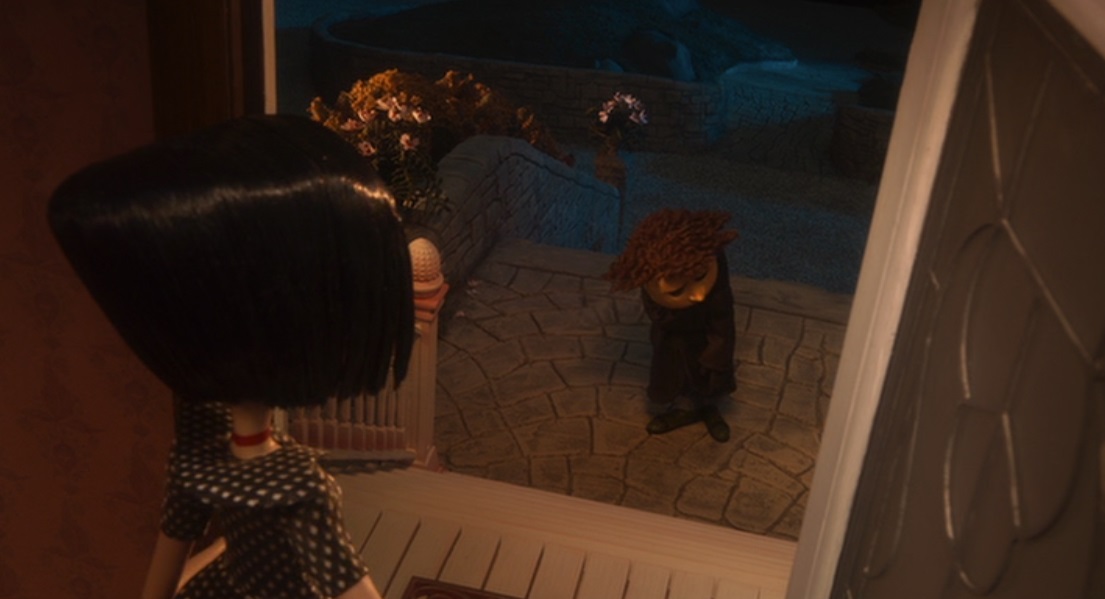
The Other Mother only deals in monologues, a puppeteer who ultimately voices all the puppets in her play. The Other Mother knows Coraline is annoyed by Wybie in real life, but still longs to interact with someone her own age. Unlike the black cat’s sudden acquisition of human speech in the Other World, the Other Wybie is purposefully redesigned as a mute by the Other Mother in anticipation of this need. However, the Other Wybie eventually gets in trouble for “pulling a long face.” As anyone who works in customer service knows, a cheery disposition is often strongly enforced because employees are viewed as representatives or “faces” of the companies they work for. Wybie’s underlying unhappiness must go undetected for the Other Mother’s charade to succeed. A minor slip-up, letting his forced grin dissolve for just a moment, destroys the overall appearance of well-being.
This dissolution extends far beyond the downturn of a smile to the cadence with which words are uttered. The tempo of the Other Father’s voice deepens from a chirpy, happy-go-lucky skip to the sound of a dying tuba or bagpipe as the Other Mother’s power diminishes. The Other Mr. Bobinsky’s voice becomes drawn-out, grating, and metallic (a reminder of the Other Mother’s mechanical skeleton). His speech, reflective of the many rats hidden underneath his circus coat, starts to resemble Gollom’s speech in The Lord of the Rings trilogy and The Hobbit. His words begin to conform to pluralities with drunken-sounding added S’s to the ends of words, a characteristic which does not appear even with the real Mr. Bobinsky’s accented and broken English. This serpent-like quality is extended over into how the rats’ chief focus is persuasion over brute force, at least initially. While the Other dogs in Miss Spink and Miss Forcible’s home attack Coraline like a triggered alarm system, these Other circus mice are not as easily provoked into outward aggression. Instead, they attempt to verbally manipulate Coraline into giving up the game.
The masks Kubo’s aunts wear are pale and expressionless. Until the tussle of a fight reveals this, it could be assumed these masks were not masks at all but their actual faces unblemished by the common touch of mortality. When one sister’s mask gets cracked and breaks off, an unsettling and sinister grimace is revealed underneath. A fake smile is usually confined to the mouth alone whereas a sincere expression of happiness spreads throughout the entirety of someone’s face, conveying itself through the eyes as well. This is what makes the Other Mother’s world and the Moon King’s reign especially devious. With buttons for eyes and masks on, there is no way to properly gauge intentions and thoughts that unrestricted access to facial expressions might inadvertently reveal. The eyes are removed from the equation as a default, but the mouth must work in conjunction in order to truly succeed in the deceit.
The Bare Bones of a Corset and the Art of Busking
If the eyes and mouth cannot partner up in the deception, the possessed body must be propped up by artificial means. A husk or cage-like structure such as corset must correct the slumped-over spine and hold up what is otherwise deflated and unconvincing, acting like a scarecrow in a field against any would-be crop-raiders. Deceit is not restricted to the face alone, but hidden within body posture. As the Other Mother’s powers weaken, her body undergoes a series of noticeable structural changes. She is no longer fleshy and warm, her maternal warmth conveyed with a full-figure. The skin starts to pale and turn ashen, cracking like a broken bone china plate held together with black glue. The Other Mother is rigid and spindly and perfectly manicured with dangerous claws for fingernails. Her stature is stretched-out and elongated but nonetheless looming in an almost pre-historic and reptilian appearance.
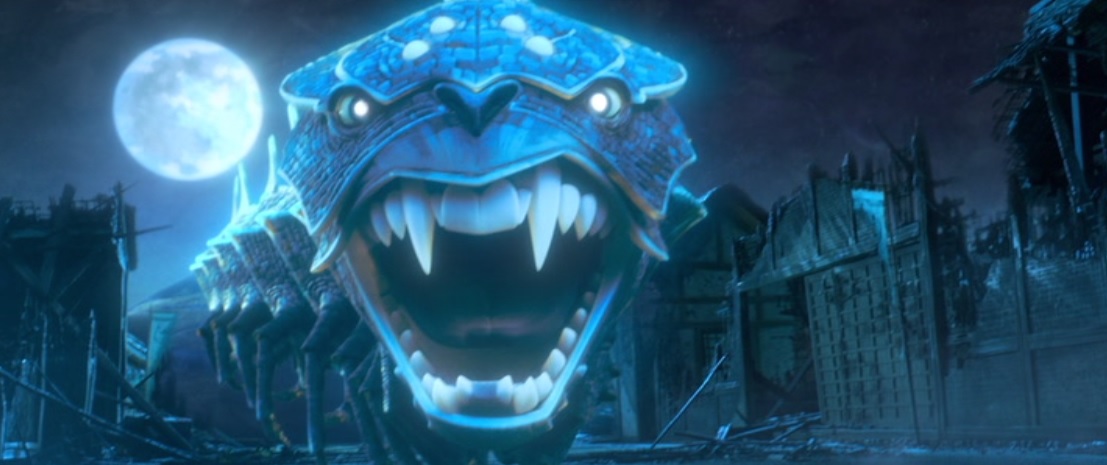
A similar metamorphosis occurs within the Moon King in Kubo and the Two Strings. His transformation into the Moon Beast renders him both ancient and armored. The earth-bound creature he most resembles in this moment is the prehistoric Dunkleosteus. All that remains of these ancient creatures in real life are their “massive skull plates and jaw bones,” illustrating their fearsomeness as predators. Though they likely “swam with a wavy sideways motion, like an eel[,]” their parting signature is not one of suppleness and slipperyness. Mimicing the Other Mother’s affinity for needlework, the Dunkleosteus’s “mouth sliced[,]… work[ing] like scissors… [and] creating a natural self-sharpening mechanism” (Mangels). 27
He glides through the air as if swimming in water, a skeletal dragon with the phosphorescent glow of an angler fish. Like an angler fish, the Moon King prefers to hide in the depths of shadows while luring his prey with a shining beacon of light. With his thick, bony plates layered over a segmented and centipede-like body, his appearance is not unlike the Other Mother’s food-deprived body. There is an eerie sharpness to their newfound physical features with nothing resembling soft mortal flesh to be found.
The reverse can be found in Coraline in the form of the Other Mother’s figurehead partner. With his haplessly lanky frame, drooping voice and sagging body, the Other Father is rife with complications from the start. His posture resembles one of those inflatable tube men at a car dealership, benignly waving according to the whims of the breeze and seemingly acknowledging all the passersby in their cars. When the Other Father’s life force dims, he grows plump and lumbering. He looks like a rotting body that has succumbed to the effects of bloat as he is rendered from a human being into a blueish flotation device. This drastic transformation, a reversal of his supposed wife’s, conveys the emptiness and insubstantial qualities of the Other Mother’s world.
When Coraline attempts to retrieve the final eye during her game with the Other Mother, she never actually comes face-to-face with a decaying version of the Other Mr. Bobinsky. Instead, Coraline is met with a misshapen brocade jacket and top hat skulking about the upstairs apartment space without any sign of a corporeal form underneath. Its movements are gelatinous and animal-like in how it skulks and slinks about, in and out of the shadows. Unlike with the Other Father, there is no longer any pretense being made about a lack of emptiness.
Kubo and the Two Strings contrasts this emptiness with essence. Beetle notes that Kubo is the only one out of their newfound family of three not designated by his outer form. Though they share the same soul, Monkey is set apart from Sariatu just as Beetle is not exactly the same as Hanzo. Kubo is never reduced to being simply “The Boy.” He is Kubo through and through, one who is precious and irreplacable to those who truly love him. One’s name holds a special power because it unmistakably denotes a specific person, but is also unusual in its purpose. It is a noun in its proper form, acting almost as an adjective with its mission of precision, but without anything concrete to show for it. It is surely easier to answer “What is a boy?” (or a beetle or a monkey, for that matter) than to do the same with “What is a Kubo?”
“If I’m Beetle and you’re Monkey, why isn’t he called Boy?” – Beetle
From Kubo and the Two Strings.
Lending a Helping Hand
Though the Other Mother’s world is full of hot air, creation stories essentially begin with emptiness and the “hand of creation” that plucks something out of it. When one attains a special significance, one is “plucked out of obscurity.” In order to begin draining the Other Mother’s power from her, Coraline has to steal the orb-like ghost eyes. Like Prometheus’s theft of fire from the reigning gods, these orbs must be grabbed and held onto which suggests the destruction of a world in order to construct a new one under Coraline’s direction. The ghost eyes could be said to be the only truly solid things in the Other Mother’s world.
Kubo’s magical shamisen is also an instrument that must be plucked in order to be played. This gives it a vibrational quality analogous to the Other Mother’s spider web. Coraline’s dowsing rod, though it only makes a brief appearance in the film, serves a similar reverbatory role. It is said to cause the dowser notable, involuntary spasms that reveal a conduit between the individual and the hidden object. 28 Like a troubadour with a lute, Kubo with his shamisen is an inventive, improvisational storyteller whose reverberations not only carry sound across great distances but make one’s own presence keenly felt. Much like Coraline’s trapped parents and the ghost eyes, the final piece of armor Kubo acquires is hidden in plain sight.
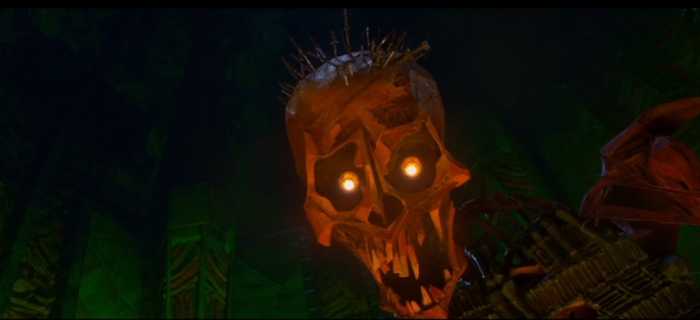
Unlike the sword, which requires battling a giant possessed skeleton to obtain, and the breastplate found at the bottom of the Long Lake, the helmet has been in Kubo’s village the whole time. Disguised as an unassuming bell, it joins the action of rattling the helmet with jogging his memory. Kubo’s first act of retrieving the sword from the skeleton’s skull suggests there has been a significant mental block that has prevented Kubo from seeing what is right in front of him. Releasing the pent-up memory later on, in the form of the breastplate in the Long Lake, is as if releasing water from a dam. Retrieving the final piece of armor makes amends by acting as a warning call to return to where he began and defend what has been left behind.
Kubo’s initial retrieveal of the sword is a reversal of the concluding rescue of the helmet. The sword is at first believed to be ostentaciously embedded in a huge skeletal hand, planted center-stage and under a beaming natural spotlight. However, this is revealed as a fake when it easily shatters during combat. The real one is hidden in the skull and must be fought for. The helmet never makes such a bold pretense to deceive Kubo. It is there for the young, becoming warrior whenever he is ready to claim it. Kubo makes a similar statement by the end of the film, no longer attempting to evade his fate. Unlike Kubo accidentally revealing his location to the Moon King, as he does when he first loses his mother, Kubo boldly claims his territory and stakes his life on it by the final showdown. This is where an alternative definition of “pluck” comes into play, one that encompasses qualities of bravery due to spiritedness.
The Other Mother’s power is relegated to her hands, since their power is what introduces the movie world to viewers. In poker-playing terms, it is also the first “tell” of the Other Mother’s deception. During her first meeting with Coraline, her anxiousness for Coraline to stay is revealed when the Other Mother impatiently drums her fingers on the dining table like a spider in motion. The Other Miss Spink and Miss Forcible further enforce this image, tightly clinging onto control by clasping their hands together to hide the second ghost eye from view. Coraline is never fully rid of the Other Mother until she disposes of her mechanical hand. It is smashed to pieces, bundled with the key to the Other World and weighed down with a rock, and finally thrown down the well, which resembles a less vibrantly colorful version of the tunnel between the real world and the Other Mother’s world. She is treated as a common witch, whose fearsome powers must be submerged to alleviate communal anxieties. As if to hearken back to “the hand of God” theme in the first few frames of the movie, a new creation story can always be made if the creator’s hand exists to mold and shape it.
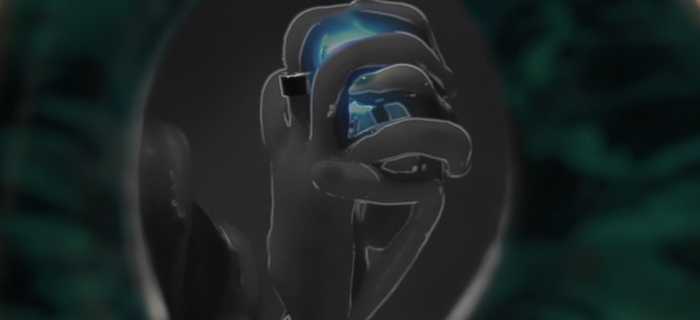
Kubo reaches out to his mother during her initial act of self-sacrifice, but ends up rescuing only a strand of her hair. Even when left with a single string, Kubo can craft a new story for himself. Much like the Other Mother of Coraline, Kubo also has the divine “hand of creation.” He has the extraordinary ability to manipulate origami, make pieces of paper come alive with the music from his shamisen. However, Kubo merely imbues inanimate objects with energy and entreats the inanimate to “come alive” of their own accord. Unlike the Other Mother, he does not exert further control over his newfound creations after the construction process is done. In this way, he approaches C.S. Lewis’s depiction of Christianity within The Screwtape Letters. Evil is anxiously hell-bent on acquiring followers by whatever means necessary, but goodness acknowledges personhood and must be embraced willingly by the subject in order to be worthy of the name.
A hand reaching out in the Other Mother’s world is not always a gothic omen à la Thing from The Addams Family, intent on playing the puppet master of asphyxiation. Afterall, it is the ghost children’s hands emerging from their rescued eyes that helps Coraline shut the door to the Other Mother’s world. In his final heroic moment, the Other Father hands over the first of the ghost children’s eyes to Coraline as he sinks into the disintegrating garden (no longer a Garden of Eden) of the Other Mother’s world. It most notably happens while atop a bridge overlooking a pond. It likely represents the overall collapsing of the bridge between Coraline’s original world and the Other Mother’s created one. Its suspension over the water suggests both a precaution on the Other Mother’s part as well as a visual teaser hinting at a witch’s eventual, watery fate. The water’s surface is also expertly layered over with lily pads, creating yet another illusion of solid ground that one’s foot would easily slip through as soon as the attempt is made. The bridge collapse suggests the Other Mother has overextended her reach.
Unlike the other ghost eye retrieval scenes, which contain elements of guarding what the Other Mother fears losing, the Other Father is clearly being physically manipulated into attacking Coraline. There atop his tractor, which resembles a giant praying mantis, he repeatedly apologizes to Coraline for his outlandishly aggressive actions. A praying mantis is an insect broadly known for being a stealth predator. The female sex of the species is infamous for her habit of consuming her male counterpart after his reproductive purpose has been served, which can still be accomplished even when he is headless but not yet dead. The chance of this violent cannibalism occurring is far higher when the praying mantises are in captivity, just as those under the Other Mother’s watchful gaze find themselves in. 29 Removal of the head, the hungry mate’s point of focus, clearly shows the mind-body dissociation Coraline must be wary of.
However, the Other Father’s final act is handing over the eye he has been designed to protect. Instead of a vice-like grip of a corpse undergoing rigor mortis, as with the Other Miss Spink and Miss Forcible, his hand relaxes like a body resigning itself to death by fulfilling its final purpose. Hands clasped together in prayer, as the deadly praying mantis suggest, convey a lack of interference. They are not desperate to reach out and cling to things, but their stillness betrays strength held in reserve. The praying mantis physically and behaviorally resembles the Other Mother and Moon King’s towering, elongated stature that involves minimal effort in ambushing its prey, but with a key difference. Praying hands construct a bridge of their own when the reigning god appears to have forsaken them by not reaching out first. It is also a sign of Coraline’s self-containment here, no longer needing or wanting the world the Other Mother has built for her.
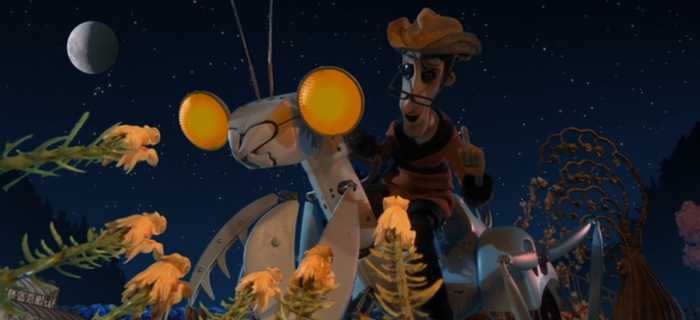
Like other predatory insects, the praying mantis acts as a potential form of pest control. It serves as a formidable opponent to the storyteller spider. It expands the territorial scope from the staged arena of a giant interwoven web to that of an abundant garden. Since this praying mantis the Other Father uses plays the role of farming equipment, its entire job is to rip apart the fertile ground the characters have been standing on. The narrative turf, the soil upon which one takes root and builds a foundation may get plowed through, dug up, and turned over. Carefully crafted characters get uprooted and recycled, but malicious characters like the Other Mother and the Moon King are no longer exempt from this process as they once believed they were.
“Reap what you sow”/”The Reaper of the Sewn”
Now that the physical body has been fully overtaken, both the Other Mother and the Moon King act as “reapers of the sewn.” Coraline’s world get smaller and smaller with each passing moment spent in the Other Mother’s company. As long as the Moon King reigns, Kubo and his mother live in constant fear of the nighttime and this transforms them into flesh-and-blood versions of floating memorial lanterns, adrift and subject to the wayward whims of the water’s currents. Though technically still alive, much like Miss Spink and Miss Forcible’s Scottish terriers, Coraline and Kubo are at risk of being paralyzed and tied to the decaying husks of bodies they cannot hope to leave behind. Much like those dogs, it becomes more and more difficult to tell the difference between an individual already consigned to death and one who has merely resigned himself ahead of time.
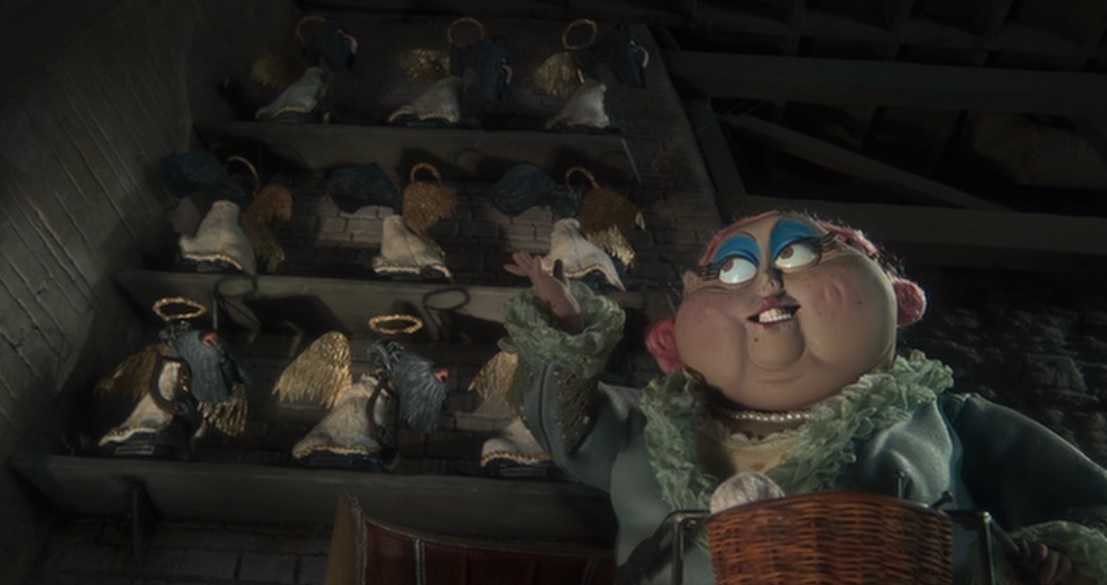
A major reason to confuse the dead with the merely paralyzed in these films is that the protagonists are forced into bonding with what they fear and hate, unintentionally cloaking themselves in those qualities. Hollow relationships follow Coraline around and a confused sense of identity stick to Kubo, like static builds up (as if in frustration) before discharging with a painful shock of electricity. Coraline is only gifted with an improved relationship with her actual parents when she must confront a frightening alternative to them. What Kubo winds up with, after losing everything one hopes to be secured with from birth, is the grandfather he and his mother spent their whole lives running from. What is fit for human consumption, no matter one’s dietary restrictions, often contains an unsavory source or connection. A garden or a farm’s soil harbors a host of horrors as well as beauty. It is where the possessed, the fully-overtaken body, must finally be laid to rest along with all the layers of grime it has accrued. Like the Shinto religion of Japan, which Kubo and the Two Strings nods to, everything in existence is imbued with spirit (good or bad) without exception.
Sariatu’s monkey totem disappears when she becomes Monkey, but “Little Hanzo” remains even when Beetle shows up. Since he must assume his father’s role, Kubo is essentially “Little Hanzo” and this figure cannot disappear before his work is done. It is “Little Hanzo” who redirects Kubo’s focus to his home village when the Moon King falsely leads Kubo to believe the final piece of armor lies in Hanzo’s abandoned fortress. Kubo’s allegiance to his mother defines his childhood, but Hanzo illuminates the road to the man Kubo must become. Much like Coraline‘s use of the praying mantis, Hanzo’s stag beetle form takes on a greater significance in Kubo and the Two Strings. Spending much of their lives underground, these insects are good at playing the long game. They serve as a counterpoint to the ephemeral, stratospheric world of The Moon Kingdom. Stag beetles also feast on rotting wood, not only destabilizing firm foundations but serving as an impetus for Kubo’s paper-crafting abilities. 30
Neither Coraline nor Kubo and the Two Strings leave anyone six feet under for long. The last step requires reversing the process through resurrection and reanimation. The phrase “you reap what you sow” is useful in this context because it combines the act of gardening or farming with an allusion to puppet-making. Fertilizer and compost material serves as food for rebirth, repairing and recycling just as the Other Mother does but with a more profound purpose. Creation as humans understand it is always re-creation since, according to the Law of the Conservation of Matter, matter can neither be created nor destroyed. If one were to eliminate the hyphen in “re-creation,” one quickly realizes an essential element the Other Mother and the Moon King are missing out on when acting as storytellers… namely, how to have fun with it.
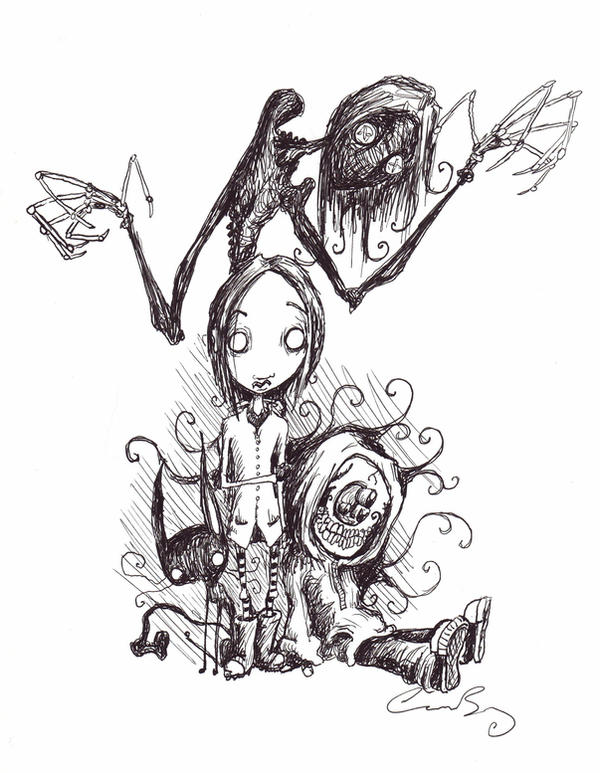
Whenever the Other Mother remakes her dolls, she assumes a micromanaging position by overseeing the process from beginning to end. The Moon King goes on a murderous rampage when, despite the appearance of a placid family harmony, he can no longer keep all of his puppets in line. A gardener or a farmer, on the other hand, must leave much of the fruits of his labor up to fate. Parents, ancestors, and other authority figures create “mini-me” extensions meant to fulfill set expectations for the future or recover lost ambitions and dreams dredged up from the past. This is the puppet/doll route. The “gardener” or “farmer” parent takes care to do the necessary work to allow the child to flower, but does not let too many personal thoughts or feelings interfere with how the “plant” or child eventually unfolds.
To return to an earlier metaphor, the storyteller’s vision is created in the spaces between three keys points: the author, the text itself, and the audience. These gaps leave room for intention and interpretation to breathe and are thus subject to change. Coraline and Kubo’s actions illustrate a reaction to the threat of these gaps being artificially fastened too tightly together. Coraline and Kubo must take ownership of themselves by reclaiming the family and friends that have been forsaken, whether by choice or not.
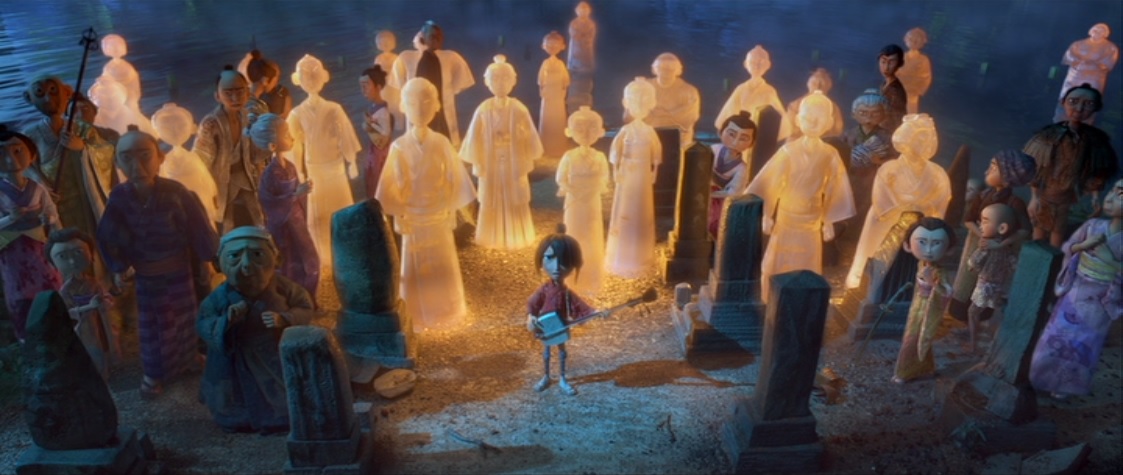
Solidity of identity here is not concerned with merely preserving the physical body, but of leaving its imprint somewhere (much like a great story lives on well beyond the lifespan of its creator). Kubo is able to defeat the Moon King with the help of every member of his village, both living and dead. By conjuring up the souls of departed loved ones, he does not merely recall them with an obscure fondness. He physically resurrects their presence through memory, asserting them as a protective force field against the Moon King. Much like hands clasped in prayer, two sides of an individual that are at odds with each other invite the intervention of a third aspect to supply clarity, one of supposedly higher authority.
The Other Mother and the Moon King attempt to serve as this heavenly authority, but their respective visions fall woefully short of anything truly enticing. This comes about largely because they misunderstand the roles they play. Coraline and Kubo can play the storyteller role just as much as they can. In fact, they prove to be far more effective at it because the remaining cast of characters can be on board with their ideas. A spider’s prey, when caught in its web, changes the overall structure and dimensionality of the trap’s surface. Much like Albert Einstein’s understanding of the curvature and elasticity of space, the trap, though intended to invite others in, must physically bend and stretch to conform to the newfound presence of the prey. 31 The precocious web-weaving nature of the of storyteller spider, which naturally stands aloft and untethered to the surface it creates, cannot understand such a concept and instead adopts a Newtonian flatness it can safely glide across with no apparent impact at all times.
For the sake of encapsulating the Moon King’s actions and better understanding his perspective, one must reverse the genders of the Sun and the Moon in Japanese mythology within the Kubo and the Two Strings narrative. Sariatu must represent the Moon, since she once belonged to the Moon Kingdom, and Hanzo must represent the Sun because the Moon King is consumed with the desire to obliterate that intrusive, alternative influence. Where then, does Kubo stand in all of this? As discussed before, he is a combination of the Sun and Moon. However, beyond this obvious composite, it would also be appropriate to suggest he is the Earth. The Sun and the Moon have an vital relationship to planet Earth, one allowing life to exist and the other serving as a natural satellite. However, since the Moon and Earth are more closely bound together by their gravitational pull, their relationship is the more intense of the two and thus contributes to the Moon King’s confusion. Afterall, Sun-like Hanzo is represesented by his bowstring on Kubo’s shamisen. However, Moon-like Sariatu is represented by a strand of her hair just as Kubo is, showing just how tethered these two orbiting bodies are to each other. Despite its huge size, the Moon is meant to orbit the Earth, not the other way around. The Moon is also reliant on the Sun to reflect any light at all. With such blatant disrespect shown in not acknowledging these facts, the Moon King clearly misunderstands his place in the celestial kingdom.
“Don’t leave me! I’ll die without you!” – the Other Mother
From Coraline.
Coraline is annoyed that her real parents appear to be just storytellers. They write about gardening more than they do any actual gardening. When she meets the Other Mother, who flawlessly handles cooking for the entire household single-handedly, and the Other Father, who plays piano and gardens, she meets more “fruitful” versions of her real-life parents. They appear to engage with the world in a way her always technologically plugged-in real parents never seem to. What Coraline doesn’t realize is her Other Parents are neither true gardeners nor storytellers as her real parents at least have the potential to be. They are merely words someone else has made up.
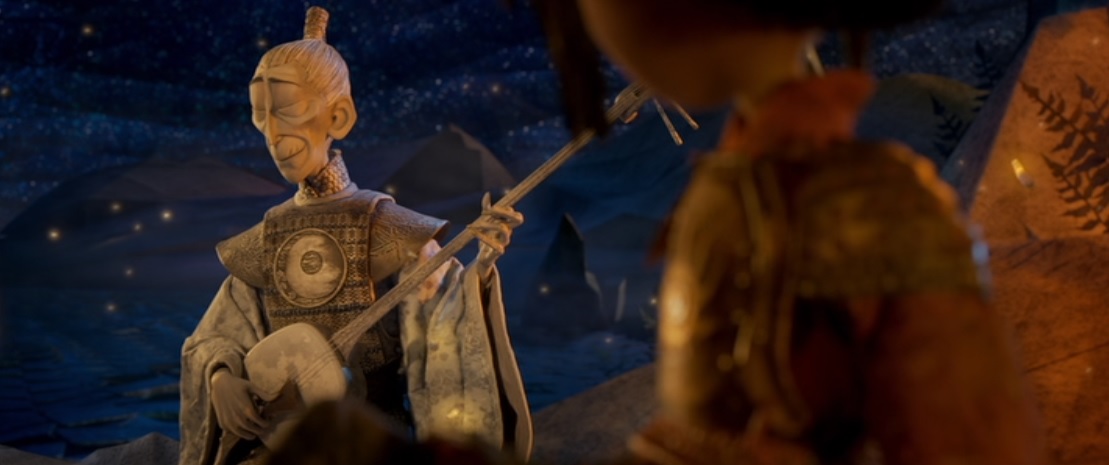
The Moon King appears to play the magical shamisen much like his grandson, but is only shown doing so in Kubo’s dreams. His powers of creation are specter-like, appearing from the great beyond as a deadly siren intent on causing a shipwreck. He is someone who clings onto power he no longer makes appropriate use of anymore. His music is heard by no one but the boy he intends to manipulate. The origami used is constructed out of the golden-hued mists of the dreamworld, as if replicating the immateriality of sunlight itself. Unlike the paper-bound street theater Kubo constructs, meant to entertain passers-by with stories of brave warriors, the Moon King can only construct a house of cards which can easily be blown away. He refuses to relinquish his grip on a world he no longer understands and has lost touch with.
A Spark of Life: A Lesson in Grounding Electricity
How exactly do Coraline and Kubo manage to wake themselves up? How does one reanimate the body? Collaboration is where the recycling process attains a greater level of significance because it is where Coraline and Kubo must reconnect with life above ground. The Other Mother and the Moon King act like insulators and clouds because they are both self-contained and ephemeral, storing up a frustrated energy within their victims until it explodes violently and allows the worlds around them to implode as a result. 32 Electricity, after all, is what rouses Frankenstein’s monster into consciousness. The key difference is that, unlike Frankenstein’s monster, Coraline and Kubo were fully-fledged individuals to begin with. They simply needed to be reminded of that truth.
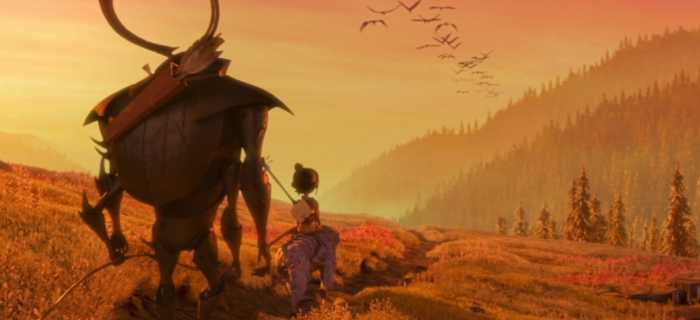
To be grounded, both literally and figuratively, is thus preceded by a jolt of discharged static electricity as an attempt to rectify an imbalance of charges. 33 The narrative actively commits violence upon its characters, rousing them towards a wakefulness that molds agency out of what would be pure puppetry. During Kubo’s journey with Monkey and Beetle, they spot a flock of golden herons overhead which are said to carry departed souls after death. However, it could just as easily apply to those who simply forget their mortal bodies, prematurely parting from them in a psychological escapism. At the end of the film, a similar image is conjured up. In “Toro Nagashi” or the floating lantern festival, Kubo actively takes part in the mourning ceremony as opposed to being merely a passers-by and detached observer. Since the lanterns float along the water as opposed to in the air, this festival actively grounds the airborne soul and tethers it momentarily to loved ones that remain on Earth. 34
However, the effects of this grounding are not just shown as explosive reactions to repeatedly sustained acts of violence. They also show up in subtle flashes beforehand, precursors to the eventual outcome. On Kubo’s first night after his mother’s death, the paper samurai “Little Hanzo” stays animated for the first time ever upon Kubo’s waking and without the shamisen needing to be played. This level of the unconscious influences tied to creation is further suggested during Kubo’s first interactions with Monkey. He initially intentionally creates origami birds to tease a flesh-and-blood bird in the frozen wilderness. However, when Monkey admonishes Kubo for not taking their quest seriously enough, the paper birds turn into paper mosquitos of their own accord to antagonize Monkey. Kubo becomes somewhat of a god in his own right, removed from the Moon King’s direct influence but powerful nevertheless.
This is carried over into Hanzo’s first flight, where his ability to do so is only activated by a reflexive, in-born paternal instinct to protect his son. His powers only come by as an unconscious reaction to outside forces, suggesting the creator no longer has control over his creation. However, as is the case with Hanzo as opposed to Kubo, this does not automatically imply wreaking havoc. It implies metamorphosis, the chemical changes of matter, cannot be artificially interfered with by the Other Mother and the Moon King.
Unfiltered and raw feelings, when they are harnessed correctly, better reflect one’s innate will. They are not easily bossed around or hedged in as detached and orchestrated logic can be manipulated. This gives Coraline and Kubo their own impressive source of narrative power that remains out of reach for the Other Mother and the Moon King. Words on their own are ephemeral and subject to change, whether through outright deceit of others or one’s sheer propensity for self-deception. Once Coraline and Kubo can reclaim their bodies and their ability to affect change in the physical world, the realm of imagined families and promises of a bland immortality no longer suffices as a good enough substitute.
By the end of the film, the real world comes to reflect Coraline of its own accord and generate reflections of her new state of mind. Coraline’s real mother surprises Coraline by buying the colorful gloves her daughter initially longed for, in addition to the boring gray ones purchased earlier. The feeling of serendipity can only occur between the living, within the tension between fate and free-will, because the inherent uncertainty of life combined with an individual’s drive to course-correct is what allows for elation just as much as despair.
Since he is not part of a musical, Kubo never sings his thoughts and feelings aloud to either the other movie characters or even to the audience. He is an instrumentalist, making Kubo’s wordless powers primal in their narrative potency. Regina Spektor’s cover of The Beatles’s “While My Guitar Gently Weeps” has a shamisen assuming the place of the titular guitar. The lyrics elevate the power of instrumentation above human speech. Instrumentation alone invites audience participation, but skillfully evades pinpoint accuracy in terms of interpretation. A fruitful void, an inviting space, is created by these missing words that the Moon King’s painstakingly-crafted script would not have willingly invited into the narrative. Kubo cannot succeed in finishing the story of the noble warrior versus the Moon King while busking on the streets until he has accomplished the feat himself in real life. Furthermore, the feat cannot be accomplished while Kubo is still missing the “two strings” he must add onto his magical shamisen in addition to his own. Kubo’s true powers can only be accessed when, figuratively speaking, more than one person pulls the strings.
Shutter to Think of the Parallels
Both Coraline and Kubo and the Two Strings grapple with the dichotomies between the real versus the unreal, in various forms, which put confused individuals into real jeopardy. Kubo and the Two Strings elevates the importance of Kubo and his parents as three separate strings. However, strings by their nature must be physcially constructed parallel to each other to produce digestible, coherent music. Though there is strictly-speaking no limit to the number of parallel lines there can be, they are traditionally symbolized by just two vertical lines. It looks like mathematic’s version of a pause button.
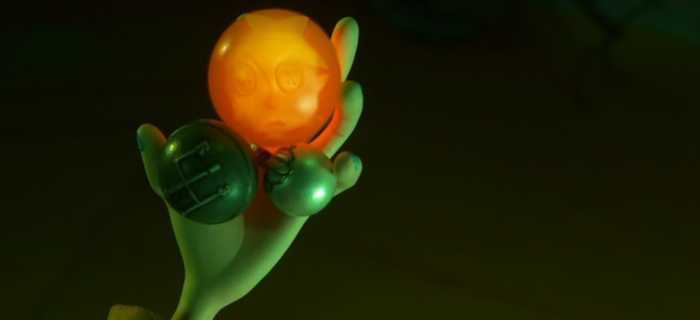
Parallel lines could be said to be a lot like a pause button because they are defined by their static, indefinite nature. This serves as a quiet respite for Coraline and Kubo who, in order to undergo the grounding process, must subject themselves to an onslaught of coiled-up frustration. However, it is in the nature of parallel lines to continue on and on, perhaps forever, without touching or being touched by anything. Not even the two lines of the parallel symbol, who have the appearance of a bonded pair, meet each other no matter the long distances they might travel. Three points, on the otherhand, seem fated to converge upon each other. Coraline must gather all three ghost eyes into one place to have any chance at besting her Other Mother.
To return to the electrical discharge metaphor, these mirrored worlds function like identical charges. They can only briefly tolerate each other, but their similarities ultimately drive them apart, forcing a tear in Coraline and Kubo’s existences. 37 Parellel lines construct a narrative of competing worlds, of two realities (or fantasies) battling for supremacy and ignorant of there being any relation to the other. Each asserts its realness and denouces the other as illusion and falsity, making only one of them worthy of attention and allegiance. To choose poorly would be a grave mistake. The Other Mother only exists because there is an original mother whom she must try to embody and model herself after and because Coraline wants more than what is currently offered in her own world. To deny either of those truths is electing blindness. Coraline can no more survive her recent move to a new neighborhood without becoming rooted there anymore than Kubo can find his parents resurrected a second-time by the end of the film.
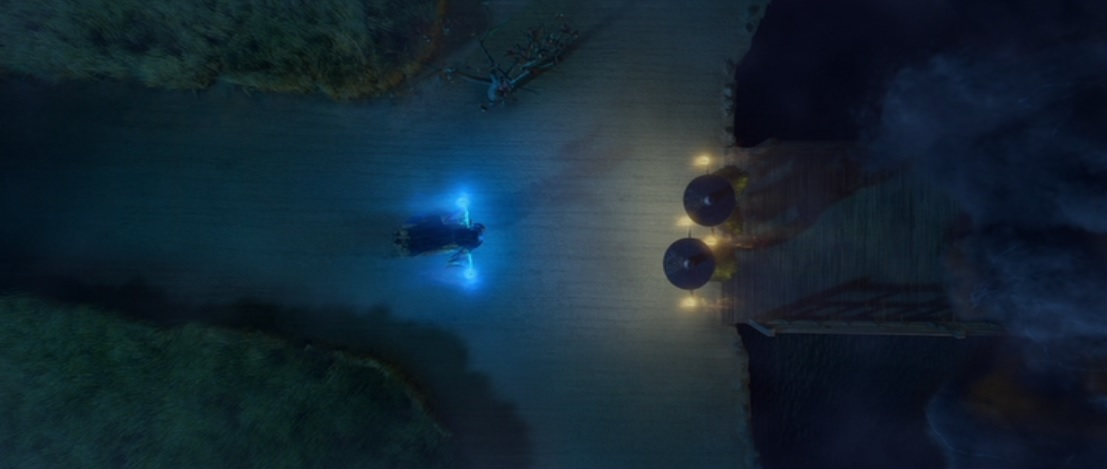
The Moon King and Kubo’s aunts do not seem to care to exist as a party of three or even five, as it makes them unstable. With Sariatu, they originally existed as a family of four. However, when Sariatu abandons them and Kubo enters the picture, their main concern is surpassing the need for Sariatu to entrap Kubo instead. The concern then is merely about keeping rank, of having the appropriate amount of bodies. One could also say these parallel lines are eye-like, though not eyes of any natural human variety. These stretched-out shapes, attempting to extend beyond their natural reach, are door-like without the width or permeability that would allow anything to pass through. Just as the Other Mother and the Moon King prefer, these parallel lines are eyes that absurdly attempt to shut out all light from entering them.
If one were permitted to push down these parallels, send them toppling onto their sides, one could safely return to the earlier metaphors that serve as Coraline and Kubo’s safe haven. Horizontal parallel lines are a tilled garden or a farm with freshly plowed soil, a world that attempts to even the playing field by re-defining the natural landscape according to its own designs. As mentioned before, they could certainly attempt to be the shamisen strings of Kubo and the Two Strings. They could also be the horizontal slats of window shutters, sturdy and firmly fixed onto frames. These could easily be found on a residence of the likes of Coraline‘s Pink Palace.
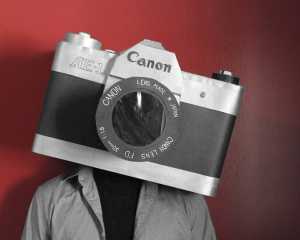
However, if one wants to be truly faithful to the implications of these two Laika films, a camera shutter likely serves a more solid standing among these visual reminders. A camera shutter mimics the naturally constricting and dilating pupils, the adjusting nature of eyes. It takes the horizontal parallels, but softens them, rounds their lines into something attempting to be circular.
“Shutter” and “shudder” act like homophones here, easily confused when spoken aloud without the appropriate context. It melds the image of a screen or partition being erected with the vibratory, bodily sensation of fear. In regard to Coraline, it combines the image of both a storyteller spider’s web strands with the physical reaction of trapped prey. In relation to Kubo and the Two Strings, there is the veil of blindness the Moon Kingdom hides behind with the act of blinking Kubo warns against. These vibrational “shuddering” sensations function much like Coraline’s dowsing rod and triangular stone as well as Kubo’s shamisen, forming a call-and response between predator and prey alike.
Photoreceptors in the eyes contain an important metphor that combines the image of parallels with the notion of cyclicality. Rods, numerous in quantity, are hyper-alert when visual stimuli is in short supply. With a potentially threatening environment so dangerously subdued, these photoreceptors are concerned with the black and white and easily discernible in the world. 38 The image produced by the word “rods” is one of parallels. Rods, slender and hyper-attuned to environmental stimuli, serve as a reminder of the primal instincts of the fight-or-flight response. Cones, on the otherhand, are far fewer in number and activate in bright conditions similar to how a camera shutter operates. Fixating on the three primary colors of red, yellow, and blue, these photoreceptors bask in the vibrance of detail in the world and are able to generate an elaborate palette from limited resources. 39 Images generated by the word “cones” are cyclical by nature. Perhaps they recall megaphones, among other things, and seem far more defiant and eager to engage with the outside world. They serve to spread out or at least preserve what has already been muffled and contained. Cones imply objects that can be reduced to a single focal point as well as be descendents of a triangle, a triple-pointedness as well as a roundness. Acting as nature’s own camera shutter, cones make an assumption of the world that few seriously contemplate.
The camera shutter’s mode of operation is a reversal of everything one comes to expect from life. Life is lived based on the prevailing notion that darkness, and a resulting lack of life, pervades all corners of existence by default. Light and the life it ushers in is fragile and therefore its presence is hard-won. A camera shutter, trapping just the right amount of light, operates on the assumption that the default mode of the world is a surplus of light coming through. Its chief concern is avoiding overwhelm and overexposure, of reducing the chance of a bleached-out image, where minute details are washed away. 40 However, the camera shutter does not bar light altogether as the Other Mother and the Moon King do. To safeguard Coraline and Kubo’s hopes, it must erect a safe refuge for light to be welcomed in and serve as a flash of illumination.
Overexposure to either reality or fantasy by itself is actively inhospitable, something that gradually deadens one’s senses over time. Life consisting of separate parallels is focused on the “or” of life, a crossroads that diverges into two very different options. A life focused on cycles, whether that be conveyed by the priniciple of threes or harmonious music or a blooming flowerbed or a preservative snapshot photo, is an “and.” Coraline and Kubo wholeheartedly reject the ultimatum of the “or” world the Other Mother and Moon King confront them with. Instead, they opt for the creative movement and dimensionality “and” promises because ultimately, movement is life.
Works Cited
- Marks, Robin. “Eye Movements in REM Sleep Mimic Gazes in the Dream World.” University of California San Francisco. 25 Aug. 2022. Web. <https://www.ucsf.edu/news/2022/08/423531/eye-movements-rem-sleep-mimic-gazes-dream-world> Accessed on 27 Apr. 2023. ↩
- “How spiders see the world.” Australian Museum. 12 Jun. 2022. Web. <https://australian.museum/learn/animals/spiders/how-spiders-see-the-world/> Accessed on 24 Apr. 2023. ↩
- The Editors of Encyclopaedia. “drawing and quartering.” Britannica. 5 Jul. 2019. Web. <https://www.britannica.com/topic/drawing-and-quartering> Accessed on 27 Apr. 2023. ↩
- James, Caryn. “Trompe l’oeil and the images that fool the mind.” BBC. 16 Nov. 2022. Web. <https://www.bbc.com/culture/article/20221116-trompe-loeil-and-the-paintings-that-deceive-our-eye> Accessed on 24 Apr. 2023. ↩
- “Moirae (Moirai).” Theoi. Web. <https://www.theoi.com/Daimon/Moirai.html> Accessed on 24 Apr. 2023. ↩
- LAIKA Studios. ‘ “We’ve Been Looking for You, Kubo” Clip – Kubo and the Two Strings | LAIKA Studios.’ YouTube, 17 Mar. 2022, <https://www.youtube.com/watch?v=clVblcweapQ> ↩
- “Why Black Cats Are Associated with Halloween and Bad Luck.” History. 13 Oct. 2021. Web. <https://www.history.com/news/black-cats-superstitions> Accessed on 25 Apr. 2023. ↩
- Pallardy, Richard. “We’re Only Beginning To Understand Dogs’ and Cats’ Facial Expressions.” Discover Magazine. 16 Dec. 2021. Web. <https://www.discovermagazine.com/planet-earth/were-only-beginning-to-understand-dogs-and-cats-facial-expressions> Accessed on 28 Apr. 2023. ↩
- “Stag beetle facts for kids!” National Geographic Kids. Web. <https://www.natgeokids.com/uk/discover/animals/insects/stag-beetle-facts/> Accessed on 24 Apr. 2023. ↩
- Hardman, Brandon. 2011. “Macaca fuscata” (On-line). Animal Diversity Web. University of Michigan Museum of Zoology. Web. <https://animaldiversity.org/accounts/Macaca_fuscata/> Accessed on 24 Apr. 2023. ↩
- The Editors of Encyclopaedia Britannica. “Dowsing (occult practice).” Britannica. 21 Feb. 2023. Web. <https://www.britannica.com/topic/dowsing> Accessed on 25 Apr. 2023. ↩
- Hone, Dr. David. “The fabulous flight-facilitating furcula.” The Guardian. Web. 11 Mar. 2016. <https://www.theguardian.com/science/2016/mar/11/the-fabulous-flight-facilitating-furcula-dinosaur-origins-birds-evolution> Accessed on 25 Apr. 2023. ↩
- LAIKA Studios. “Kubo and Mother” Clip – Kubo and the Two Strings | LAIKA Studios.” YouTube, 11 Jan. 2022, <https://www.youtube.com/watch?v=y5TI1KVFisc> ↩
- LAIKA Studios. “The Legend of Hanzo” Clip – Kubo and the Two Strings | LAIKA Studios. YouTube, 3 Nov. 2021, <https://www.youtube.com/watch?v=cDA-3F_hqoU> ↩
- Muo, Comicus.” Nietzsche and the abyss – the unity of nothingness.” The Standup Philosophers. 5 May 2018. Web. <https://thestandupphilosophers.co.uk/nietzsche-and-the-abyss-the-unity-of-nothingness/> Accessed on 25 Apr. 2023. ↩
- “7 Bizarre Witch Trial Tests.” History. Web. <https://www.history.com/news/7-bizarre-witch-trial-tests> Accessed on 25 Apr. 2023. ↩
- The Editors of Encyclopedia Britannica. “Izanagi and Izanami.” Britannica. 5 Jun. 2020. Web. <https://www.britannica.com/topic/Izanagi> Accessed on 23 Apr. 2023. ↩
- The Editors of Encyclopedia Britannica. “Izanagi and Izanami.” Britannica. 5 Jun. 2020. Web. <https://www.britannica.com/topic/Izanagi> Accessed on 23 Apr. 2023. ↩
- Boyd, Kierstan and David Turbert. “Eye Anatomy: Parts of the Eye and How We See.” American Academy of Ophthalmology. 9 Mar. 2021. Web. <https://www.aao.org/eye-health/anatomy/parts-of-eye> Accessed on 30 Apr. 2023. ↩
- Boyd, Kierstan and Turbert, David. “Eye Anatomy: Parts of the Eye and How We See.” American Academy of Ophthalmology. 9 Mar. 2021. Web. https://www.aao.org/eye-health/anatomy/parts-of-eye. Accessed on 30 Apr. 2023. ↩
- Hargitai, Quinn. “The strange power of the ‘evil eye’.” BBC. 19 Feb. 2018. Web. <https://www.bbc.com/culture/article/20180216-the-strange-power-of-the-evil-eye> Accessed on 1 May 2023. ↩
- Kühne, Wilhelm Friedrich (March 28, 1837 – June 10, 1900). 1878. Public domain, via Wikimedia Commons. 6 May 2013. <https://upload.wikimedia.org/wikipedia/commons/e/ed/Kuhne_Rabbit_optogram.jpg> JPEG file. ↩
- Minshew, Aubrey. “Retinal Optography: Fact or Fiction?”. American Academy of Opthalmology. Web. <https://www.aao.org/museum-blog/detail/retinal-optography-fact-fiction> Accessed on 25 Apr. 2023. ↩
- Hargitai, Quinn. “The strange power of the ‘evil eye’.” BBC. 19 Feb. 2018. Web. <https://www.bbc.com/culture/article/20180216-the-strange-power-of-the-evil-eye> Accessed on 1 May 2023. ↩
- Emfietzoglou, Maria (MD). “Corpus Callosum: What Is It, Location, Function, and More.” eds. Alyssa Haag, Ian Mannarino (MD, MBA), Kelsey Lafayette (DNP, RN, FNP-C). Osmosis. Web. <https://www.osmosis.org/answers/corpus-callosum> Accessed on 25 Apr. 2023. ↩
- Debrowski, Adam. “Vision: How does eyesight work?” All About Vision. 8 Feb. 2021. Web. <https://www.allaboutvision.com/eye-care/eye-anatomy/vision/> Accessed on 1 May 2023. ↩
- Mangels, John. “My, What a Big Mouth You Have: Studying Dunkleosteus’ jaws and the injuries they inflicted provide clues to a violent lifestyle.” Cleveland Museum of Natural History. 6 Jan. 2017. Web. <https://www.cmnh.org/dunkjaws> Accessed on 25 Apr. 2023. ↩
- The Editors of Encyclopaedia Britannica. “Dowsing (occult practice).” Britannica. Web. <https://www.britannica.com/topic/dowsing> Accessed on 25 Apr. 2023. ↩
- Featherstone, Nicky. “How do praying mantises mate?” Forest Wildlife. 19 Jul. 2022. Web. <https://www.forestwildlife.org/how-do-praying-mantises-mate/> Accessed on 2 May 2023. ↩
- “Stag beetle facts for kids!” National Geographic Kids. Web. <https://www.natgeokids.com/uk/discover/animals/insects/stag-beetle-facts/> Accessed on 24 Apr. 2023. ↩
- “Essay: Newton vs. Einstein vs. the Next Wave.” American Museum of Natural History. Web. <https://www.amnh.org/explore/videos/space/ligo-detecting-gravitational-waves> Accessed on 2 May 2023. ↩
- “Electricity explained (The science of electricity).” U.S. Energy Information Administration.gov. 19 Dec. 2022. Web. <https://www.eia.gov/energyexplained/electricity/the-science-of-electricity.php> Accessed on 25 Apr. 2023. ↩
- “Electricity explained (The science of electricity).” U.S. Energy Information Administration.gov. 19 Dec. 2022. Web. <https://www.eia.gov/energyexplained/electricity/the-science-of-electricity.php> Accessed on 25 Apr. 2023. ↩
- Afshar, Dave. “The History of Toro Nagashi, Japan’s Glowing Lantern Festival. The Culture Trip. 29 Dec. 2022. Web. <https://theculturetrip.com/asia/japan/articles/the-history-of-toro-nagashi-japans-glowing-lantern-festival/> Accessed on 2 May 2023. ↩
- LAIKA Studios. “Messing with Monkey” Clip – Kubo and the Two Strings | LAIKA Studios. YouTube, 7 Dec. 2021, <https://www.youtube.com/watch?v=9o_Bn83qqsU> ↩
- Focus Features. Regina Spektor – “While My Guitar Gently Weeps” – Official Video (From Kubo And The Two Strings). YouTube, 10 Aug. 2016. <https://www.youtube.com/watch?v=8hUOKjy-9-o> ↩
- “Electricity explained (The science of electricity).” U.S. Energy Information Administration.gov. 19 Dec. 2022. Web. <https://www.eia.gov/energyexplained/electricity/the-science-of-electricity.php> Accessed on 25 Apr. 2023. ↩
- Barden, Anna. “Photoreceptors and their function in the eye.” All About Vision. 10 March 2021. Web. <https://www.allaboutvision.com/eye-care/eye-anatomy/photoreceptors/> Accessed on 3 May 2023. ↩
- Barden, Anna. “Photoreceptors and their function in the eye.” All About Vision. 10 Mar. 2021. Web. <https://www.allaboutvision.com/eye-care/eye-anatomy/photoreceptors/> Accessed on 3 May 2023. ↩
- Mansurov, Nasim. “Understanding Shutter Speed for Beginners – Photography Basics.” Photography Life. 15 Sep. 2022. Web. <https://photographylife.com/what-is-shutter-speed-in-photography> Accessed on 27 Apr. 2023. ↩
What do you think? Leave a comment.
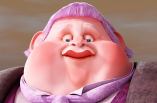
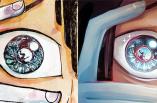
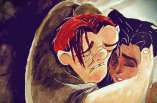
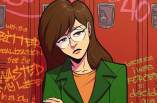
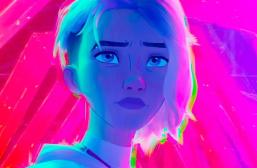
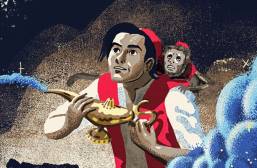
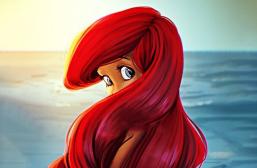
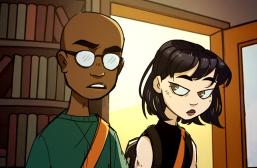
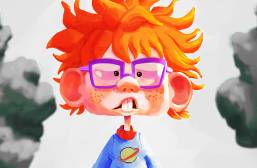
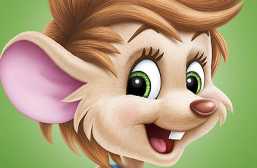
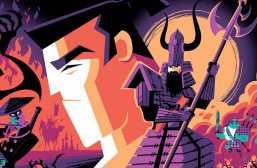
Well written. You really showed a lot of passion in this article.
Thank you for your help with edits as well as the kind words, Sunni. I’m glad to hear the passion showed through my work!
I actually used to live a 5 minute drive from Laika. In 2015, I believe they visited my elementary school to talk about their upcoming movie (Kubo). And then in 2018, in my freshmen year, we got a career day where a Laika employee visited our school. He brought one of the Kubo puppets and face. The puppet itself was quite hefty, interestingly enough. A lot of kids made him T-pose and dab faceless unfortunately. Another fun fact, his missing eye is not even built in with the skeleton. There’s just a gap where his missing eye where it supposed to be.
Wow, that’s so cool! That must’ve been an exciting career day visit. I wish I could’ve been there.
Haha that’s interesting!
In Japanese culture, eyes are the windows into the soul. in western culture people tend to focus on the mouth while in eastern it’s the eyes giving more importance to Kubo and The Moon King’s missing eyes.
The only gripe I have with Kubo is the fact that since the moon lord is blond he is evil and giving him sight makes him good wihich feels, a bit harsh towards blind people.
The main issue I had with the ending was that the Grandpa gets off basically scot-free. He killed his daughter, his son in law, and drove his other 2 daughters to their deaths, and stole one of Kubo’s eyes, and the punishment he gets is less blindness (which is good story-wise) but also amnesia…
I dunno, it just made me angry, but I did enjoy the movie as a whole.
I used to be creeped out by stop-motion filmes (mostly due to a puppet and stop motion adaptation of “Hansel and Gretel” we watched in school, it was creepy) but after I had watched Kubo with my friends that fear went away.
This movie was a masterpiece. I remember watching this a couple years ago for the first time and I loved it.
All of the Laika films are absolutely stunning.
I agree, Zoey! Laika is pretty underrated when you think of all the top-notch, high-quality films they’ve consistently put out. I also think stop-motion animated films like theirs have a distinct signature because of how much time/work is involved for that style.
The running theme with the eyes was definitely something worth looking into (no pun intended). 🙂
It certainly caught my eye, mort! Pun unequivocally intended. 🙂
What we need: Coraline 2.
I have a theory. What if coraline is the real monster I mean she did escape the other world but what if the other mother is trying to put the buttons on her eyes to save the real parents from coraline?
I don’t know what this “thing” was, but when I was very young (before kindergarten) I used to see a little ghost w/ black button eyes. Had no previous exposure to scary things because my parents didn’t let me watch horror movies. The ghost was child-sized, a floating sheet, like in the Charlie Brown Halloween tv show. The sheet had a pattern like a real bed sheet would, but I have never seen the pattern before or since. No mouth or nose and of course black button eyes. I have a memory of it approaching me quickly and I could see the sheet bottom floating rapidly like fabric in the wind. Wonder if it was really a Gray Alien and my brain changed it to something less scary…?
Oooh, that sounds frightening! I would’ve been traumatized by that sight. Coraline Jones has got some competition, I see.
I believe it really leans on metaphor in Coraline, which I think is that the eyes are like a lock, the threads a chain holding the soul and keeping it from freedom, all signified by a lock in the face, or in this case a button because it’s cute, fitting irony.
Buttons are “creepy” but I think it’s more of what is associated with buttons DOLLS dolls are creepy and feel alimony dead witch is strange since they were never alive to begin with horro for sure.
Spent so much time on kubo getting stronger, only to throw it all away, and to give his grandfather sight.
Pixar brought us memories.
DreamWorks brought us memes.
Laika brought us Amnesia.
Great films. Both center around characters that are the only light in their world.
Kubo was a gorgeous film, and very intense in the same way that I find many Miyazaki films to be. I’ve seen some criticisms that the story is a bit disjointed, but this seems utterly insignificant to me compared to the images and emotions that are put on screen. It’s like receiving a bountiful feast and complaining that the tableware could be shinier.
I agree, dali. Kubo and the Two Strings gets better and better to me the more times I watch it. It has a lot to offer us as viewers! And I love Miyazaki films as well.
I wonder if the writers of Kubo knew that studies suggest that people with even minimal eye damage involving the blood vessels of the retina have a higher risk for memory decline.
That’s an interesting thought, Buckeye! Though I was certainly not privy to the goings-on in the writing room, it is an intriguing possibility to consider.
I honestly have no idea what to believe at this point with Coraline. This is such a complicated movie with so many mysteries.
I think that the button eyes are like a brand on livestock. They mark the children as her’s.
Yes! I think so too, Gary. The Other Mother can’t seem to conceive of love as anything else but that.
If you think about it Coraline played off getting out of the button eyes really well until she refused the other parents tucking her in. If she had just accepted and let them tuck her into bed then they would have thought everything was fine and then Coraline would have gone home like normal.
No they knew what they were doing. Coraline was clearly uncomfortable.
I suppose you’re right. When she freaked out about it and said “No way! You’re not sewing buttons in my eyes!” that didn’t exactly help. I just thought after that she changed it and played it off even though she did show signs before that she didn’t want to and was scared and uncomfortable
If she wasn’t so desperate then yes but if she was rlly hungry she would have used everything she could use to get her to stay. She needa be resourceful and slurp that soul up. No crumbs left.
This is my favorite article on Laika studios.
One of the things that struck me about Coraline was the parallel to drug addiction.
A young person dealing with a world of, at best, careless indifference, stumbles into a world of fantasy, where, while she’s there, everything becomes smooth sailing for a brief period of time. She’s enticed by the seemingly simple and charming world but has enough awareness that if she permanently enters the world, she’ll lose her vision of everything outside of that world and be trapped there until she becomes a shadow of herself, or perhaps entirely a shadow person (dead).
When she breaks free, she seems to be more appreciative of the folks around her despite their flaws.
Thank you so much, Eugene! The parallels you make between Coraline’s story and drug addiction are fascinating. Yes, the Other Mother’s world definitely functions like a gateway drug meant to alleviate children’s loneliness for a brief time and at a steep, exacting price.
I love Coraline and Kubo.
I have button phobia. When I was younger. I thought it came from Coraline and later on last year. I told my parents. Idk why but my memories got mixed up and I thought I saw this movie when I was way too young back then. I theorised that the movie made me traumatized, but they said I never saw this movie before. They saw the trailer and where kinda interested in it. They said my button phobia was terrible when I was little. I think it kinda died down as i got older and now when ever my parents sometimes where to get me any kind of shirt to wear that includes buttons on it. I always wear my usual track jacket over it. Essentially if i’m eating. Just looking at it while I’m eating just makes me loose my appetite haha.
When I saw Coraline in the theater when it first came out, I was not a little kid. But age didn’t seem to matter . . . I was still freaked out by the concept! My mom also thought it was scary. I’m not personally scared by the sight of buttons, but I can’t stand the sight of sharp objects such as sewing needles. Was that the Other Mother’s doing or not? I’m not sure . . . but she certainly helped magnify the fear if nothing else.
I had a fear of buttons as a kid BEFORE i saw coraline. They were just unsettling and weirdly circular whilst being small.
I’m ok with buttons as long as they’re not sewed on to someone’s HECKIN EYES.
My dad has koumpounophobia (fear of buttons) and I never understood why.
My brother used to play Identity V (which has characters with button eyes) and I asked him why. He said because it could just be the creator’s aesthetic or something. I didn’t really think about the button eyes again until I watched Coraline……
“Coralline”, “Paranorman” and “Kubo”” have a common theme. Eyes. Coraline with button eyes (and sewing buttons onto eyes), paranorman with seeing the dead, and kubo with having one eye, the antagonist wanting his eyes, and “seeing into the eyes of other people” (as kubo said in the final battle).
Yes, I almost thought of including ParaNorman as well because of that connection. However, I ultimately decided to leave ParaNorman out of the discussion because the Coraline and Kubo films illustrate a literal theft (whether merely attempted or ultimately successful) of the protagonist’s eyes. Norman’s gift for seeing and speaking to the dead, on the other hand, does not inspire anyone to steal his eyes. In fact, he is ostracized by the living members of his community precisely because of his gifts. But yes, I definitely think there is a through-line among those films. Thank you for your comment, Aydin!
The more eyes the other mother had the more wonders she can make for the kids she tricks.
Yes, Keon! Most likely. It’s almost like she’s getting a software update with new features each time a child is captured and absorbed by her.
I found it unnerving that the children had their eyes scooped out before the buttons were sewn. Like any normal human being wouldn’t go that far.
The American animation industry desperately needs studios that make mature animated features like Laika.
I concur with that sentiment, Lynn! We need more films with their daring and ingenuity.
Laika is basically a pet project of Phil Knight (co-founder of Nike and 28th richest person in the world) and his son Travis (who is a stop-motion animator). I don’t think they actually care if they make money on the films, they just want to make stop motion animated movies.
I felt the story fell apart in the final act of Kubo despite a very strong beginning. I don’t think the character development was handled well. It became a very confused movie, and I only wish the plot has as much care and detail put into it as the animation and visual effects. It turned Kubo from a movie that I knew I would be periodically rewatching for the rest of my life to a movie I would not care to watch again.
I think it was just too much plot crammed into too small of a movie, and ended up feeling super rushed. The movie was 100 minutes long and it had 5 major set pieces, each of which was like 5-10 minutes long. There’s the first confrontation with the aunts, the fight with the skeleton, the fight on the lake, the ambush at the temple, and the final confrontation with the moon king. That doesn’t leave much time for actual character development or relationships.
As a result I didn’t think that any of the emotional moments really felt earned. It was hard for me to feel sad about Kubo losing his father when they had only had like two conversations prior to that in the entire movie. And then the ending tried to go all serious and thematic about the importance of memory, but it seemed to come out of nowhere because they never had time to really explore those ideas during the movie.
Completely agreed. Fantastic film, very much enjoyed it, but the third act was underwhelming for me too. I get why people say they like the ending, it just didn’t do much for me. So you’re not alone.
Exactly, it wasn’t a bad ending for like kids and stuff but the final act definitely seemed like they changed it from what it was originally or something weird, it didn’t fit with the rest of the movie. I loved it for the most part and the soundtrack was stellar, would watch again but def not their BEST.
I have watched these films a while ago but your article really helped me understand them better! It’s really nicely put together. Thank you.
I’m glad to hear that, Ware! Thank you for the kind words.
What if The Coraline doll was representing what was going to happen to her like the button eyes that were on the doll Anthem moving uncontrollably.
Laika folks have something for putting children in emotional/deadly situations? Also a LOT of hands and eyes!
Yeah . . . Laika films are not for the faint of heart. That’s for sure!
Ack, Kubo… I remember walking out of the silent cinema after watching this and feeling sad so few got to see what I did.
Some of the symbolism in this film have stuck with me ever since. Such as his Grandfather being the moon and want to steal Kubo’s eyes, for he was the SUN and without the sons soul/eye he would be able to defeat all life.
And the ending revealing that killing a villain doesn’t make you a hero.
Good points, Figgy! Yes, I think the ending shows and recognizes villains for what they are . . . confused and pitiful. Any sense of forgiveness here happens because Kubo no longer has anything to prove. The Moon King is not absolved of his wrongdoing, but the grandfather’s underlying weakness and fragile ego is exposed for the world to see. It reminds me a bit of the level of contempt and disgust Voldemort has for his “Muggle” name, Tom Riddle. Though he is “The Heir of Slytherin,” his “Mudblood” status tarnishes that legacy in his eyes and he quickly tries to rid all traces of that by becoming one of the most powerful wizards of all time. Echoing Kubo’s realization, Harry Potter pities Voldemort for being so misguided as to devalue love/friendship. That, to both heroes, illustrates true weakness.
This. Is simply. The most beautiful stop-motion film. Ever. That ALONE is enough to warrant this movie a place in a museum.
Well, you know how in coraline the 3 ghost kids died by getting their eyes gouged out, and had there souls stolen, and they died needing their eyes back, needing to escape, and needing to go back to their mothers. They died suddenly and with unfinished business and couldn’t move on, they stayed TRAPPED ad ghosts and when coraline got their eyes back, helped them escape, and let them go see their mothers, they could finally move on to heaven with their souls set free as Angels! Just like what happens in Corpse Bride and Paranorman! Great parallels there.
Yes! Good connections there, green. I definitely agree that those are some Tim Burton-esque themes as well.
Kubo does a good job at displaying Buddhist teachings, showing that life is not just about “the one” but rather the scope of “the whole” and how they tie to one another.
this movie is an underrated masterpiece. I love it more than words can possibly describe and every time I watch it I am completely taken by how beautiful the visuals and story is, and how much effort, time, and care must have gone into it from the sculptures to the lighting, to the music. its just everything
Short rant and my connection to the kubo movie: I am quarter Japanese, being Japanese-American. My grandfather was in the Japanese Internment camps during WWII (at a young age) thus he didnt accept his culture. My mom and I do everything we can to find roots back to our Japanese culture. And at some points it feels ridiculous ngl My mom and I are pretty white-washed (me obviously more so) and definitely get some questioning looks. We saw an ad for this and decided to watch it. I really didnt pick up much from the themes of the movie other than loss but I just sat back and enjoyed the movie. It might be because I’m just a sucker for anything Japanese but I just absolutely love this movie.
This actually makes me really happy knowing there’s others, thank you!
Something I didn’t notice until my latest rewatch is that when Kubo gives the Moon Lord sight, the eye he gives him is the one he lost. Kubo’s left eye that was taken from him by his grandfather to prevent Kubo from seeing actually helped the Moon Lord see. It’s a bit messed up, but also kind of beautiful.
Nice observation, Manuel! Isn’t it crazy how many things we miss the first time we see a movie? Kubo would say we blinked. That little detail adds an even greater poignancy to that scene, as painful as it is.
i would love to see a laika version of alice in wonderland
I love Coraline and the studio. But the storylines have been really weak ever since Coraline. When Wendell and Wlid came out I was like “Oh my gosh YES more representation and depth!” and then saw that it wasnt Laika at all. It was just Henry Selick.
The whitewashing in Kubo ruined it from the start. I still watched it! But the voice actors ruined it. There are SO MANY talented asian actors who need a big break, why give asian roles to white actors? It felt like they just hire famous white actors for the boxoffice appeal, and it really ruins it for me. Their visual quality is so strong, the writing and hiring should match it.
And YES the transphobia in Boxtrolls was so unnecessary and uncomfortable. And the fatphobia, where villains are the plus size people and NEVER the lead.
Who else wants another movie of coralline but she accepts button eyes and actually LIVES so it’s a proper movie, and slowly gets weaker and weaker because the “mother” was slowly eating her soul because, eyes are the way into your soul, so if she didn’t have eyes, her soul would be public so the “mother” would sssllloooowwwwlllyyy eat her soul so coralline became weaker and weaker until she realised she could rip the buttons off her face, and was set free, cuz I wanna see her with button eyes so bad rn lol.
I remember playing with dolls and my grandma had an old button collection she gave up on and I pretended the buttons were currency, making the more holes in the button, the more the value. So nostalgic
Kubo and the two strings is great. I’d like to think that the sisters are born out of magic, just like how the moon king is. The moon king is most likely Tsukuyomi who is the moon God in Shintoism. He was born from the right eye of Izanagi, the creator which is probably why eyes were such a great deal in this movie. I also don’t think there would be any reason to bring the moon king and the sun queen together because the sun queen would be his sister, Amaterasu. The two are in a feud due to Tsukuyomi killing Uke Mochi, the goddess of food, due to the fact that he didn’t like how she created food, such as fish and rice fields. It was really shallow of him to do that so the two got into a feud and that’s why night and day could never be together.
Yes, I think this is the most likely theory. I also think that the reason Kubo can use magic is because of his heritage, as his mother is the daughter of the Moon King.
Kubo is so underrated. It was such a beautiful story (visually and in its plot) and the parents’ part just made me teary.
Kubo and the 2 strings was robbed of every award it was nominated for and deserves to be a perfect 10/10 because on top of the movie’s great climax it sticks the landing better than a gymnast doing a 1 hand stand landing.
As a stop motion animation, Kubo is actually my least favorite stop motion film. Like, Ever. It’s not even the characters or ending that make it that low for me. It’s just TOO smooth. Stop Motion has a bit of grit to it, you can see the choppiness of the characters as they move across the screen and it’s a sincere and beautiful flaw in the art form. It’s an endearing quality that this film lost with it’s smooth animation.
My biggest gripe of Kubo wasn’t the ending or how the characters died but how the people just took advantage of an old man that had no memory and kubo not trying to connect with his last remaining family member.
A few years back my now 7 year old daughter was obsessed with this movie. She would watch it on the daily, I eventually got sucked into it and it really is such a fantastic movie. The artwork is fantastic and the story is amazing, I don’t care what anyone says.
Usually my 7 year old wants to watch the worst movies but occasionally she comes across some real fucking gems, like Kubo and another movie called “Song of the Sea”.
this is random but i remember when i was like 7-8 years old (hadn’t watched coraline at the time) and i used to put buttons on my eyes- idk why don’t ask me, i had found two big yellow buttons and i would put them and pretend i see thru them. kinda creepy if u ask me lol.
I love coraline both book and film it’s so nicely creepy. I also started to read the graveyard book by Neil Gaiman. Such an awesome writer.
What a fascinating essay. I have yet to see Kubo but I’ll definitely check it out now.
Thank you for the lovely comment, E. DeWitt! I truly appreciate the kind words. And yes, I highly recommend watching Kubo and the Two Strings as well.
I feel like the best way to describe kubo is with the quote “An eye for an eye makes the world blind” Kubo realized that by killing the moon lord, he’d basically end up the same way. Blind to his humanity. So by sparing him and giving him an eye, (the eye that he’s missing mind you) he gave that sight back to them both
Yes, I definitely think that quote relates strongly to Kubo’s journey. Good points, Lilah! Kubo proves he is the better man by refraining from what his grandfather would do so easily and without remorse (a feeling tied to retaining one’s humanity).
All of the Laika films are absolutely Superb.
I’m with you there, omgmaxsmith! Laika films are consistently excellent.
Such a thought-provoking read on Laika and the symbolism of eyes in the quest for self-possession. It beautifully captures the profound emotions and themes in the context of Laika’s journey. 🚀👁️ #SelfPossession #DeepReflection
Thank you so much! Your comment really made me smile. I’m glad you appreciate it.
Nice work! I’ve been playing with the idea of doing an article with Coraline and/or the Other Mother in it, so thanks for the inspiration. (Margin note: I’ve had a particular interest in Newsies for a while now. The Other Mother’s spider motif currently makes me think of Snyder the Spider. Maybe something that unites them with some other antagonists? Underrated villains, maybe? The kind you think you can take, but you don’t wanna mess with? Hmmmmm…)
Thank you, Stephanie! Yes, both Coraline and the Other Mother alone are great sources of inspiration. There are a lot of avenues that can be explored with the source material. And that sounds like a cool idea for an article as well!